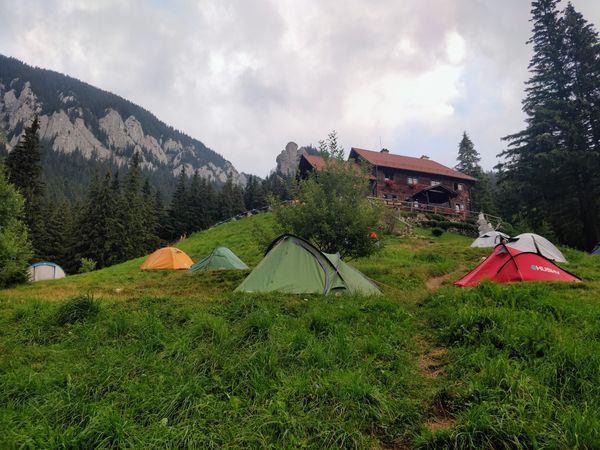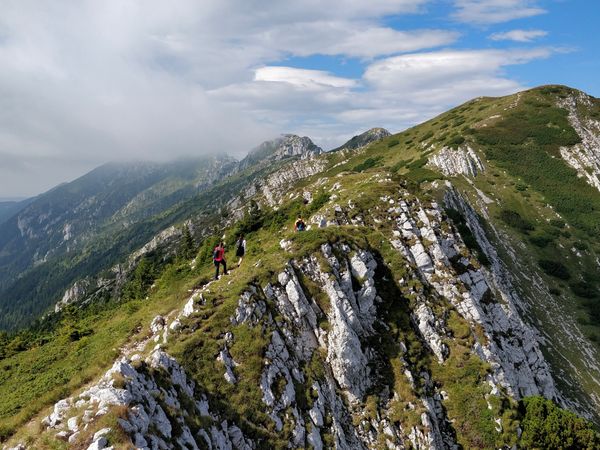El Peñón de Ifach. Hiking Above Seagulls (Apr 2021)
El Peñón de Ifach (Penyal d'Ifach, in Valencian) is the smallest natural park in Spain, and certainly one of the smallest in Europe. Covering an area of only 45 hectares, it contains a rock that rises steeply from the sea and reaches a height of 332 m.
The natural park is a paradise of flora and fauna. Despite its small size, it is home to over 300 species of plants and animals.
We have been in Gandia for some time and we are living a beautiful Valencian experience. A few weeks ago we made our first trip on the sea shore, and we were impressed by the route that took us to the Cova Tallada cave. Last week we explored three beautiful blue bays and the high, rocky cliff that connected them.
Today we decided to venture a little further south, and to explore a high rock, surrounded by water on three sides, located on the outskirts of Calpe. So we headed for El Peñón de Ifach.
A month later, we will be doing this spectacular route again with our younger brothers. The story contains pictures from both rounds
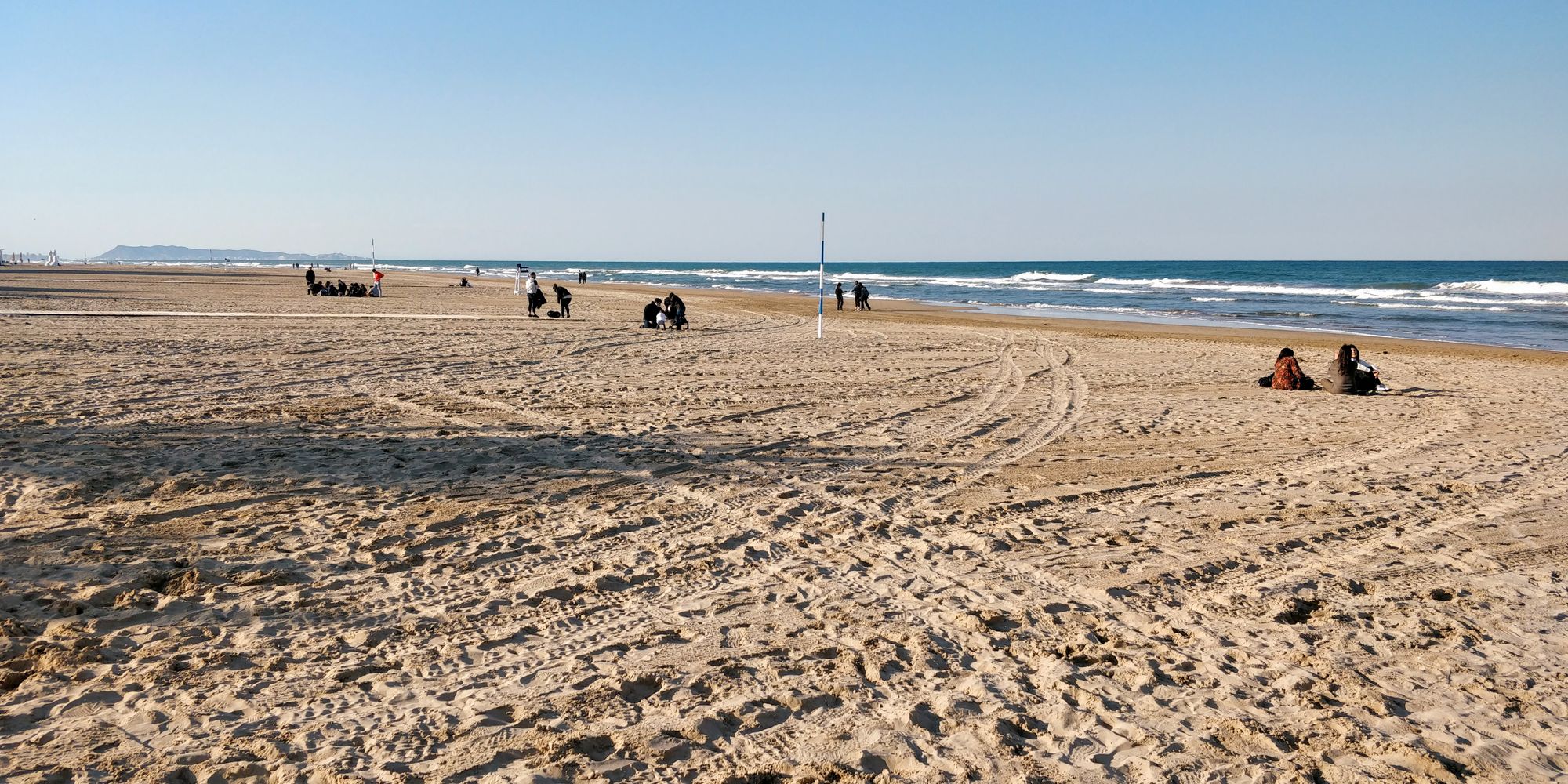
Technical Details
The route is a round trip. We start from the base of the cliff, go through the tunnel, go to the farthest viewpoint, then return, climb to the top and go back down through the tunnel.
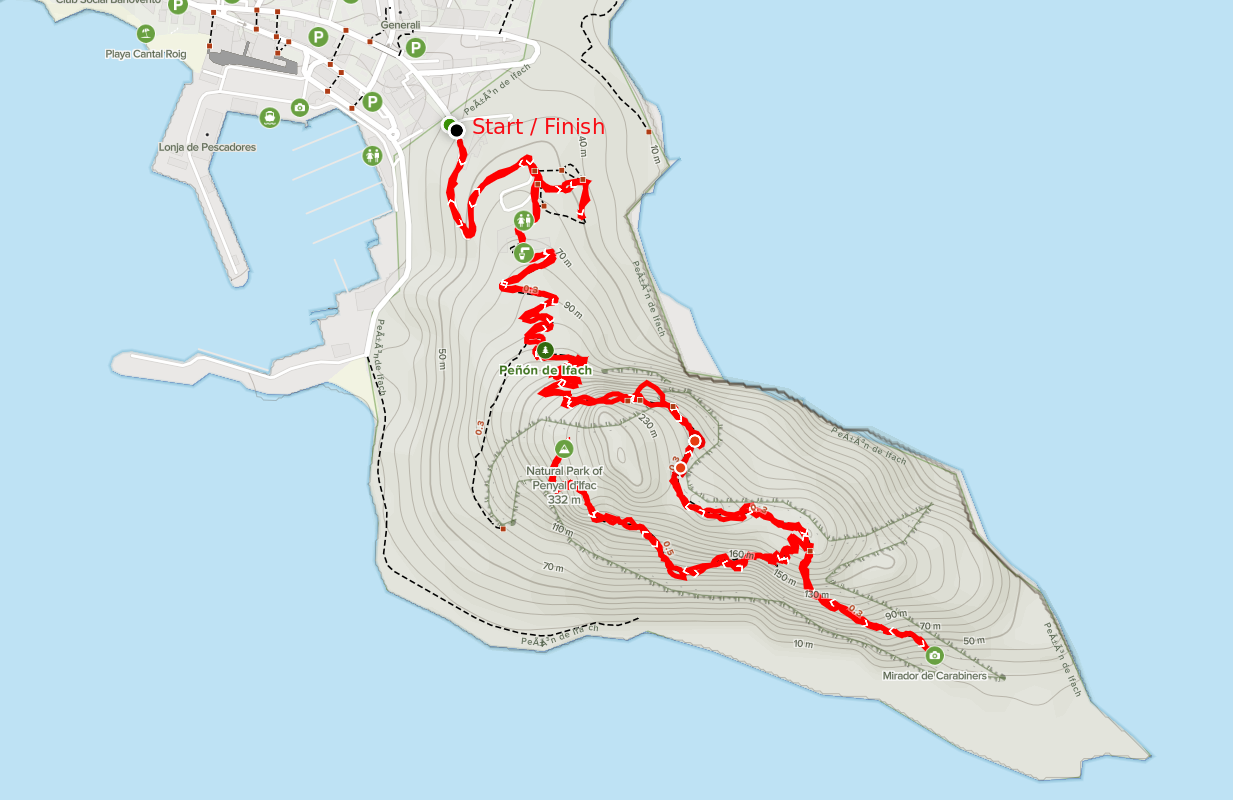
Parking: here
Route: Parking - Tunnel - Carabiners View Point - Peak - Tunnel - Parking
Markings: Red Dot
Length: 5,5km
Height Difference: 443
Duration: 2h 45m
Water Sources: None
Tracking: AllTrails
You can find information at this link, and you can make a reservation here.
The Story
After a relaxing hour of driving on the highway and a bit on local roads, after a hill and after a curve, we pull over to take a better look at what has just appeared before our eyes.
Down in the valley, a giant stone comes out of the sea. At its feet, the tall blocks of Calpe are like miniatures.
The Peñon de Ifach captivated us at first glance.
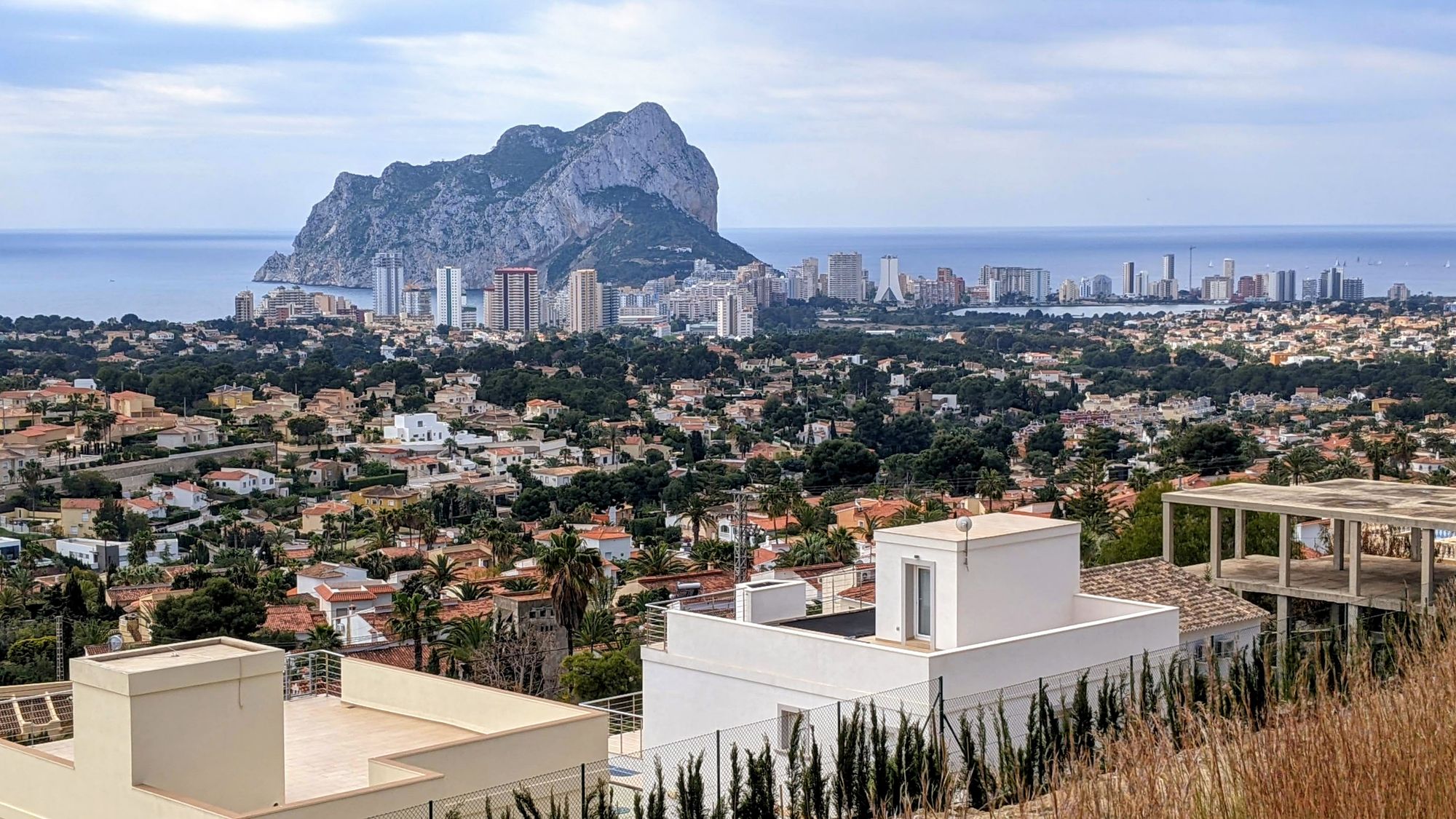
We excitedly find a parking space, and we set off.
At the beginning we climb slowly in a zigzag under the branches, on a path paved with stones, and accompanied by a wooden railing.
Gradually, the climb becomes more serious, and the closer we get to the rock, the views become more and more breathtaking.
Towards NE we see the blue sea up to Moraira. And to the west we see the blocks of Calpe, and beyond them the Sierra D'Olta Massif. The beginning is very promising.
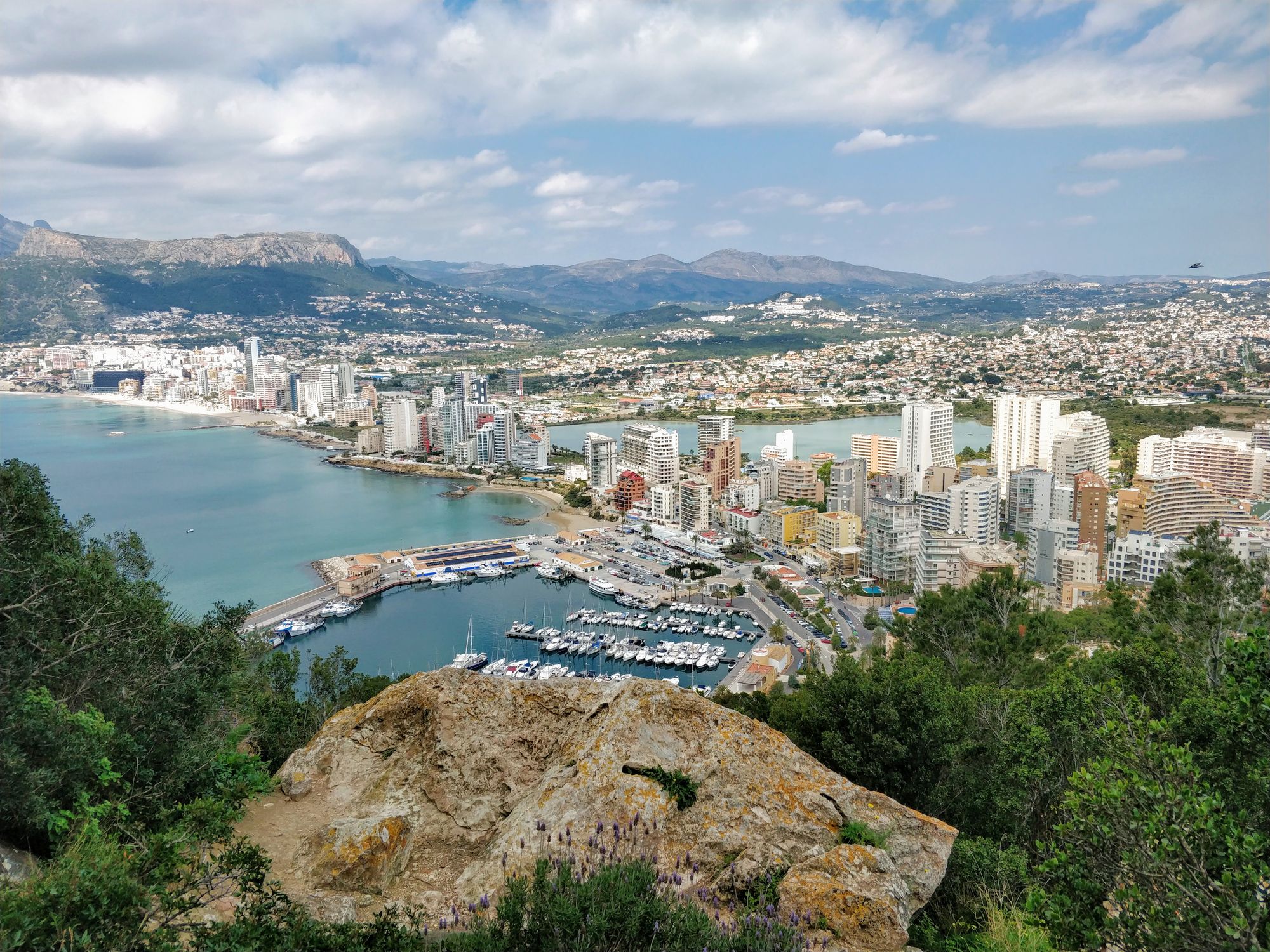
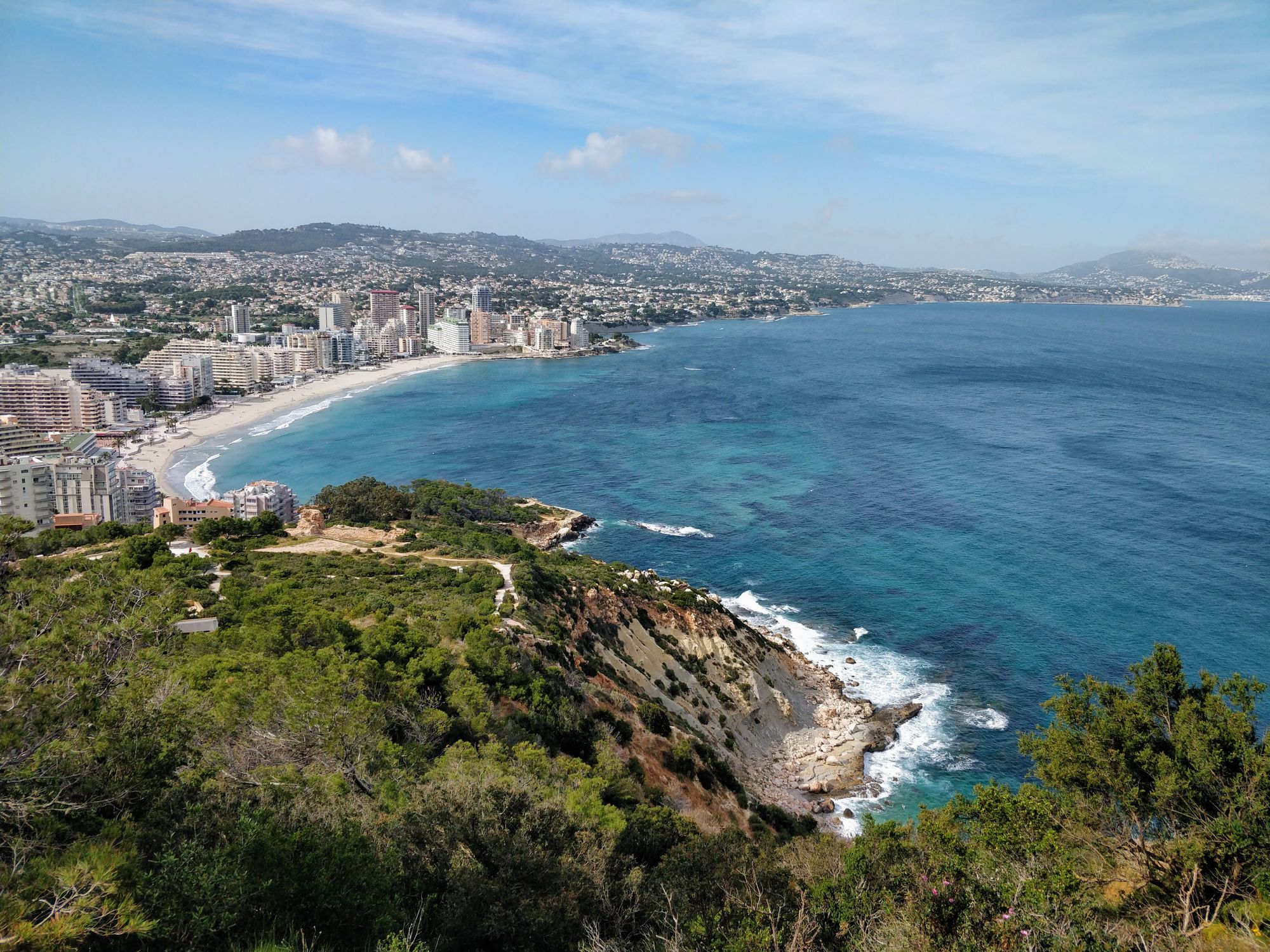
At one point, the route passes through the mountain, through a fairly long tunnel.
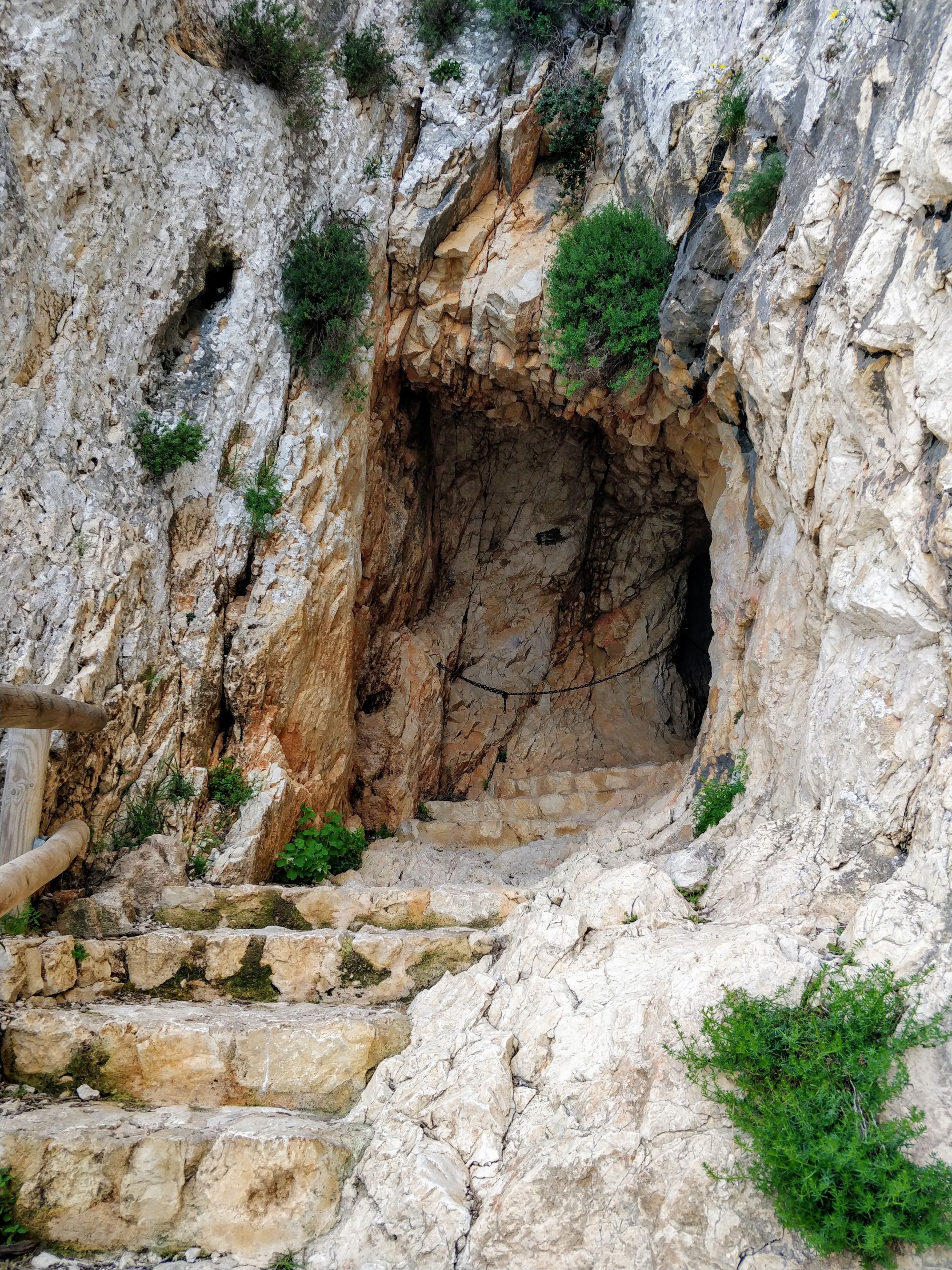
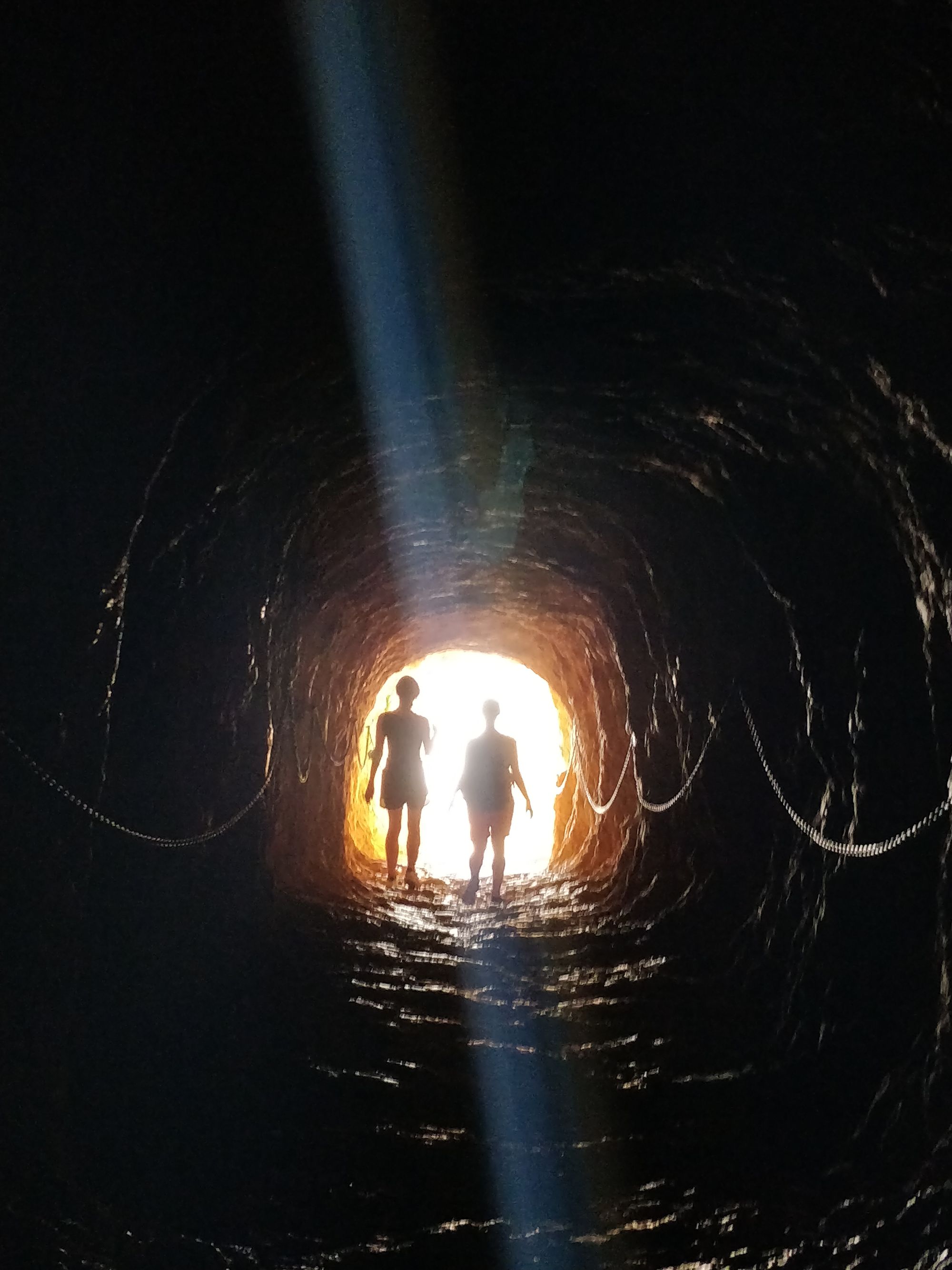
At the exit of the tunnel we find a balcony from where we can once again admire the blue sea and the northern beach of Calpe. The landscape is beautiful, especially since we realize that we are above the flying seagulls.

Speaking of seagulls, I don't think I've ever seen so many. Everywhere you look you encounter some. This is their home and they are not intimidated by people. So we have the opportunity to admire a few very closely.
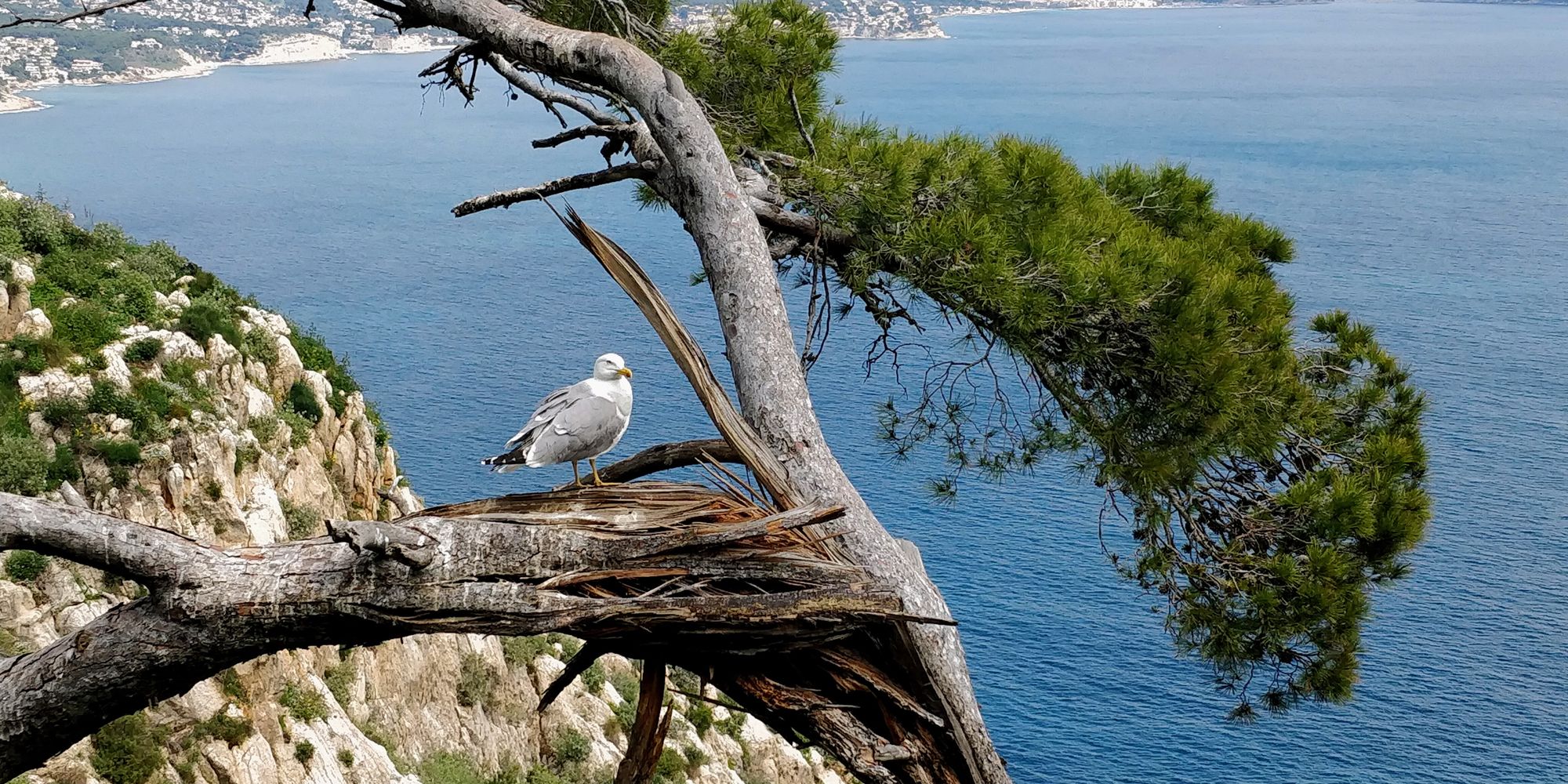
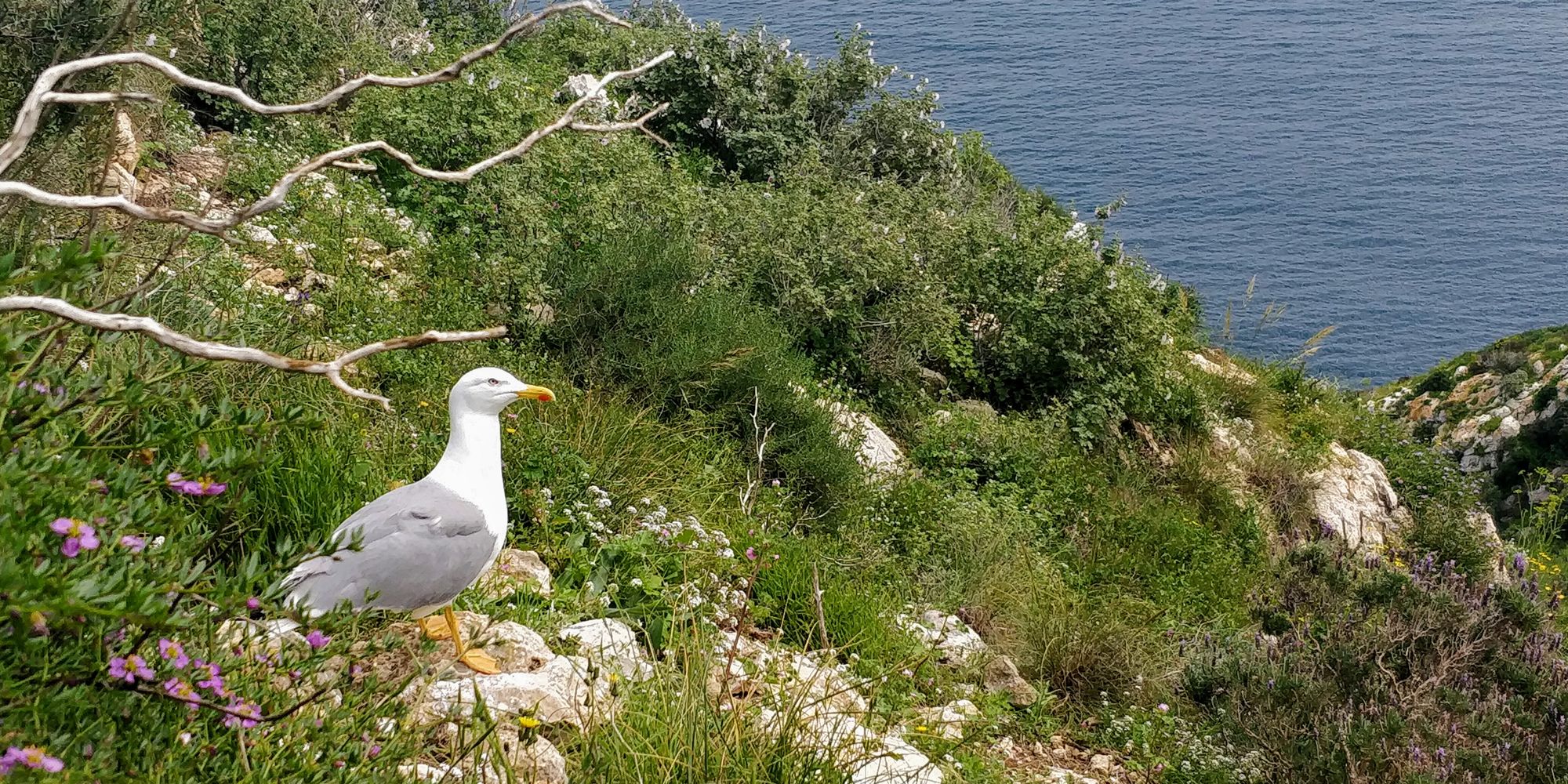
From the tunnel we walk along the contour line to the next intersection. One path leads to the lookout point at the end of the peninsula, and the other takes a right turn and then goes to the top.
We decide to go forward to the lookout point.
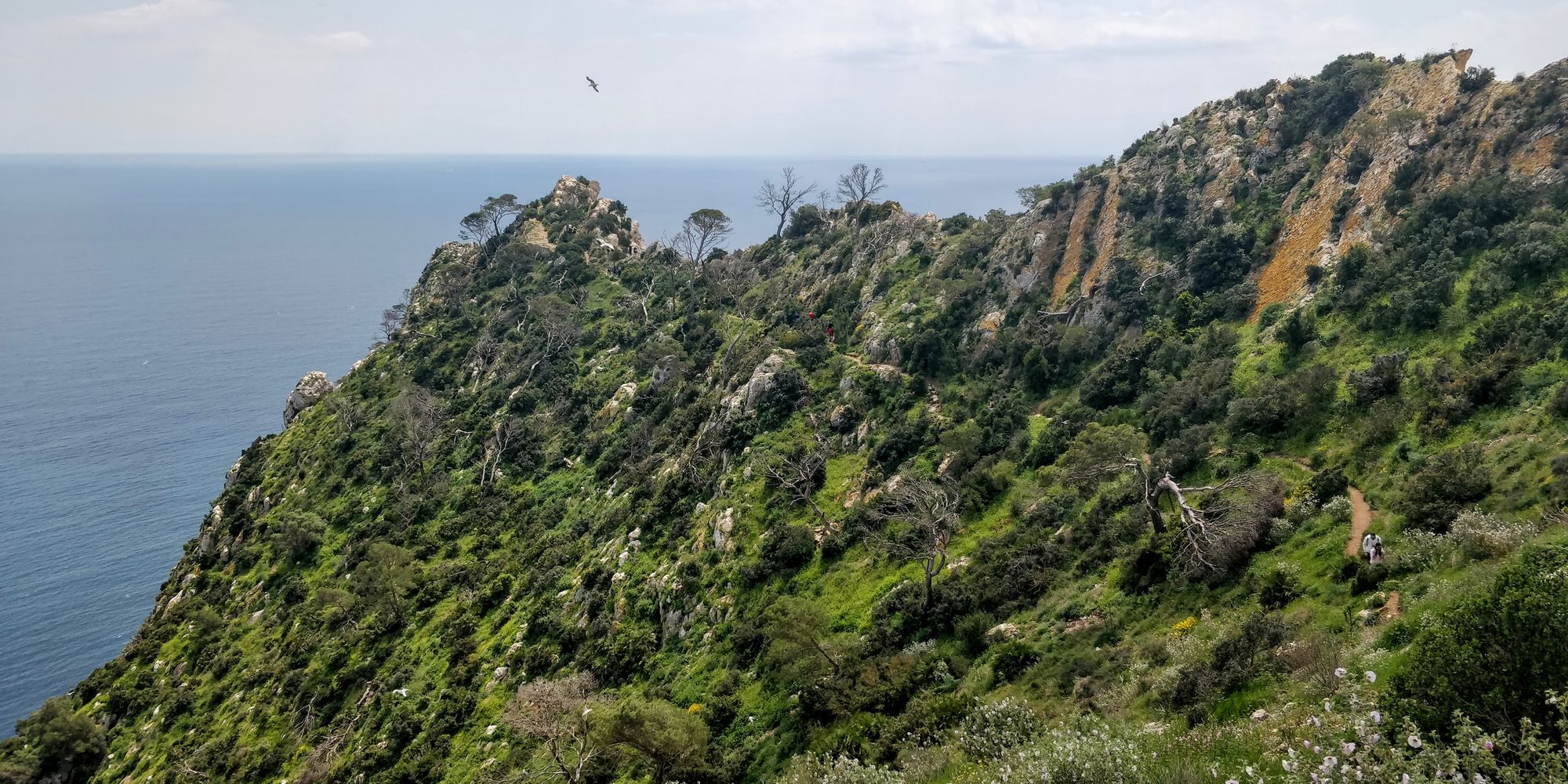
As we get closer to the end, the path narrows, and the descent to the sea is steeper and steeper. From there we can admire the sea and the Mediterranean coast to the west. Wrapped in clouds, the Sierra de Bernia massif looks very mysterious.
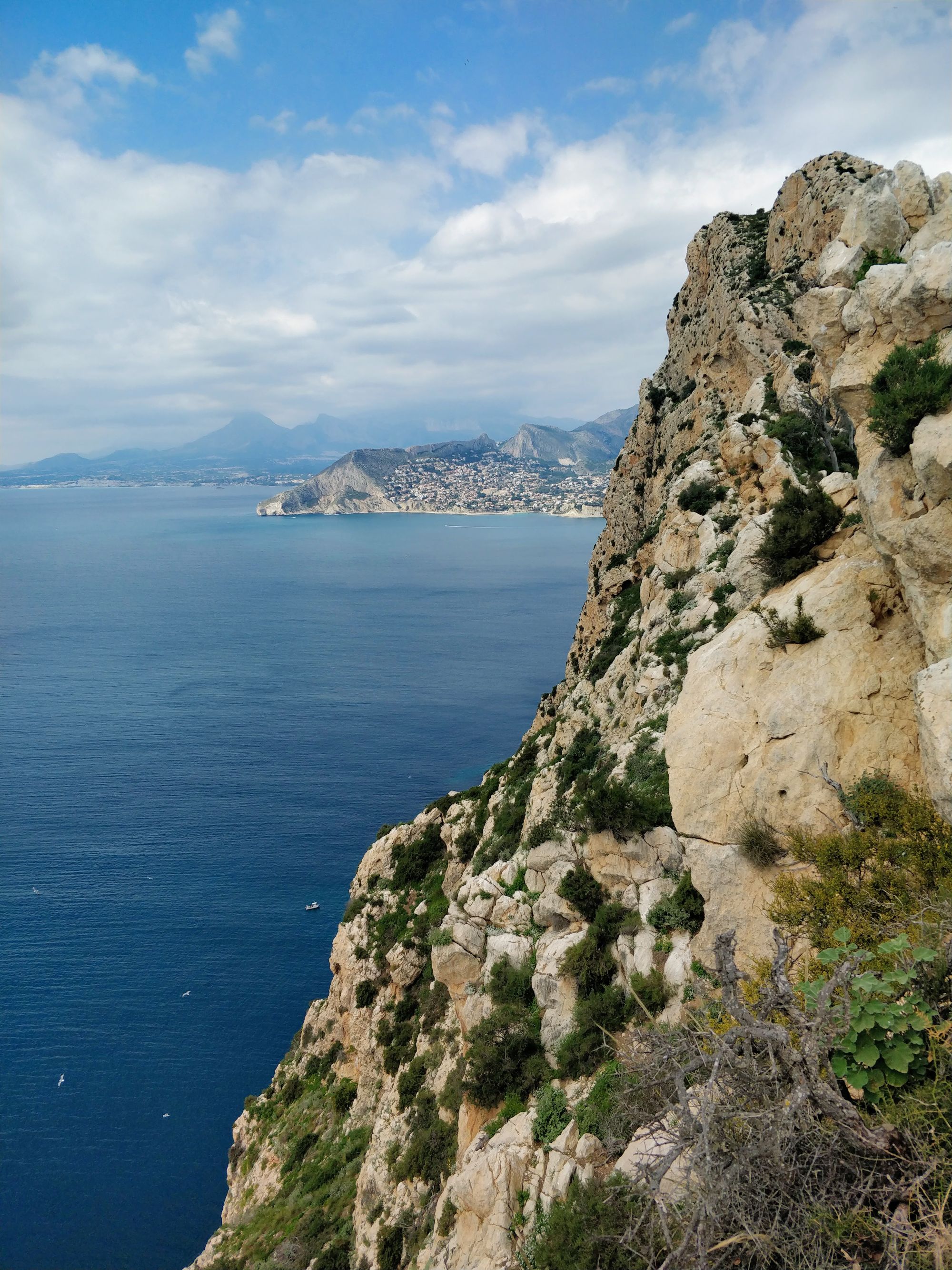
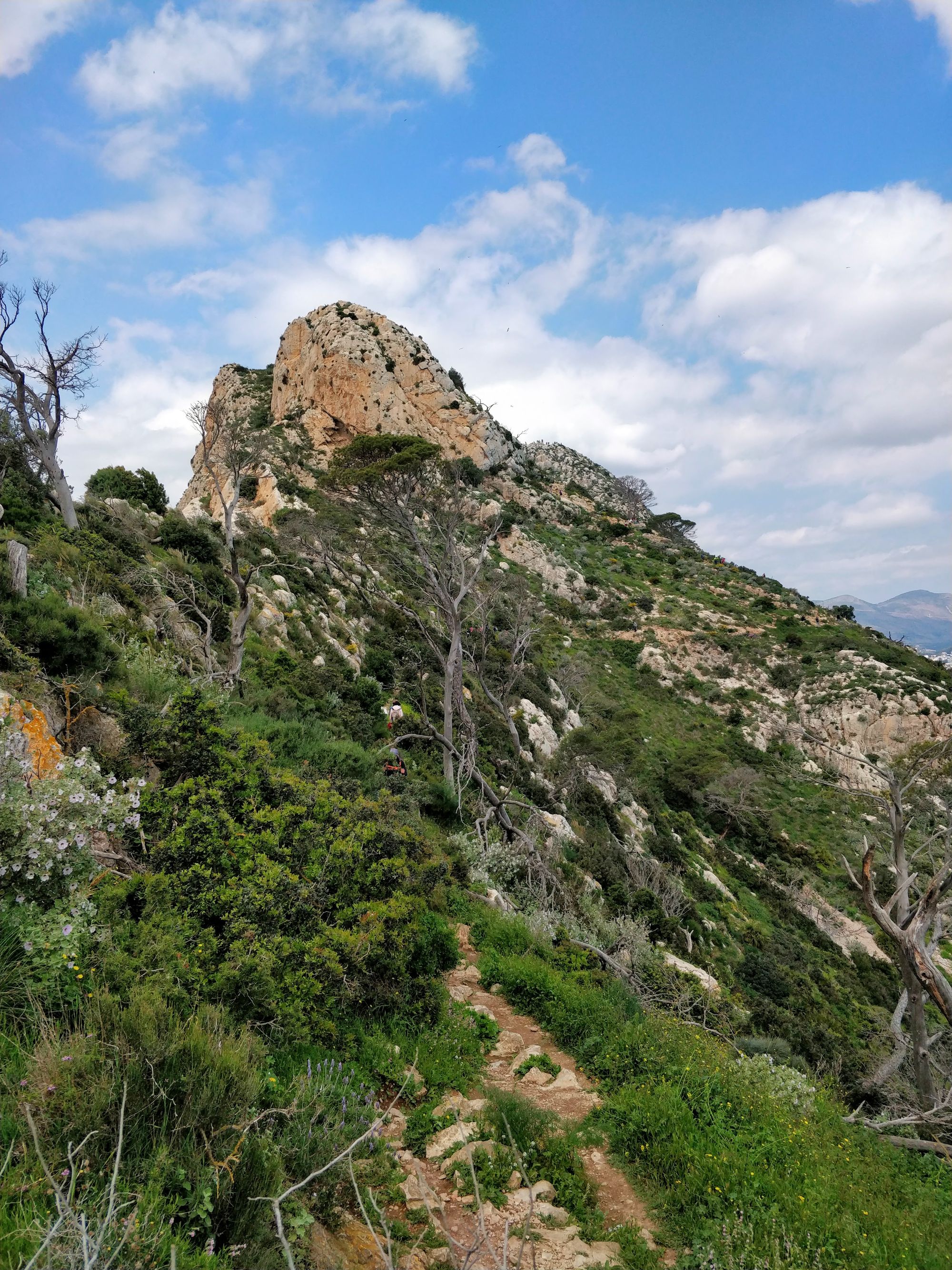
And here, as almost everywhere along the route, we see the seagulls in flight below us.
We can't get enough of watching it all, but we want to reach the top, so we start back on the path.
In addition to the seagulls, we can also admire several kinds of flowers.
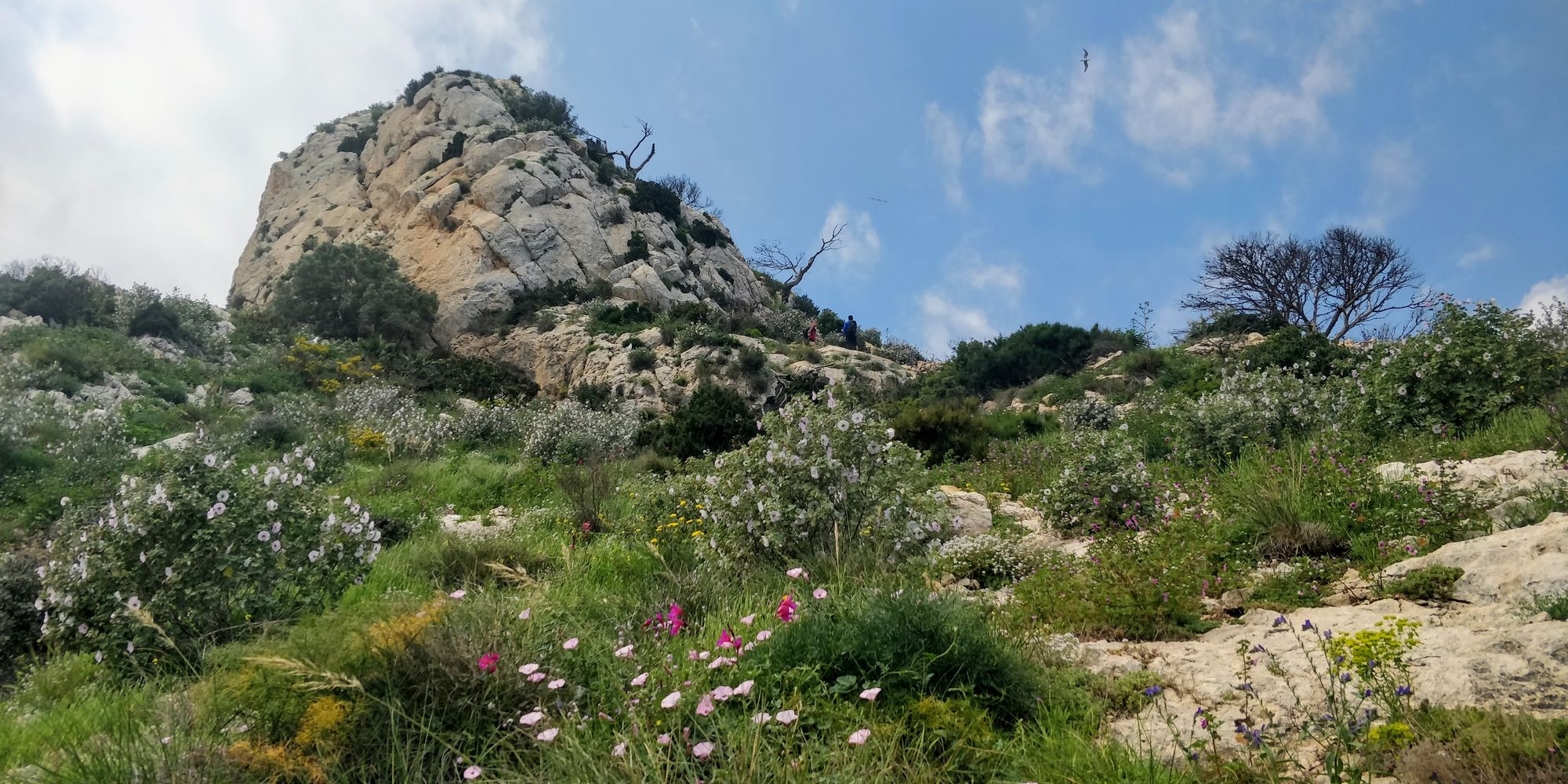
From the intersection with the road leading to the lookout point, the route becomes more serious. The big stones that have to be climbed sometimes pose difficulties, and we are helped by some attached chains.
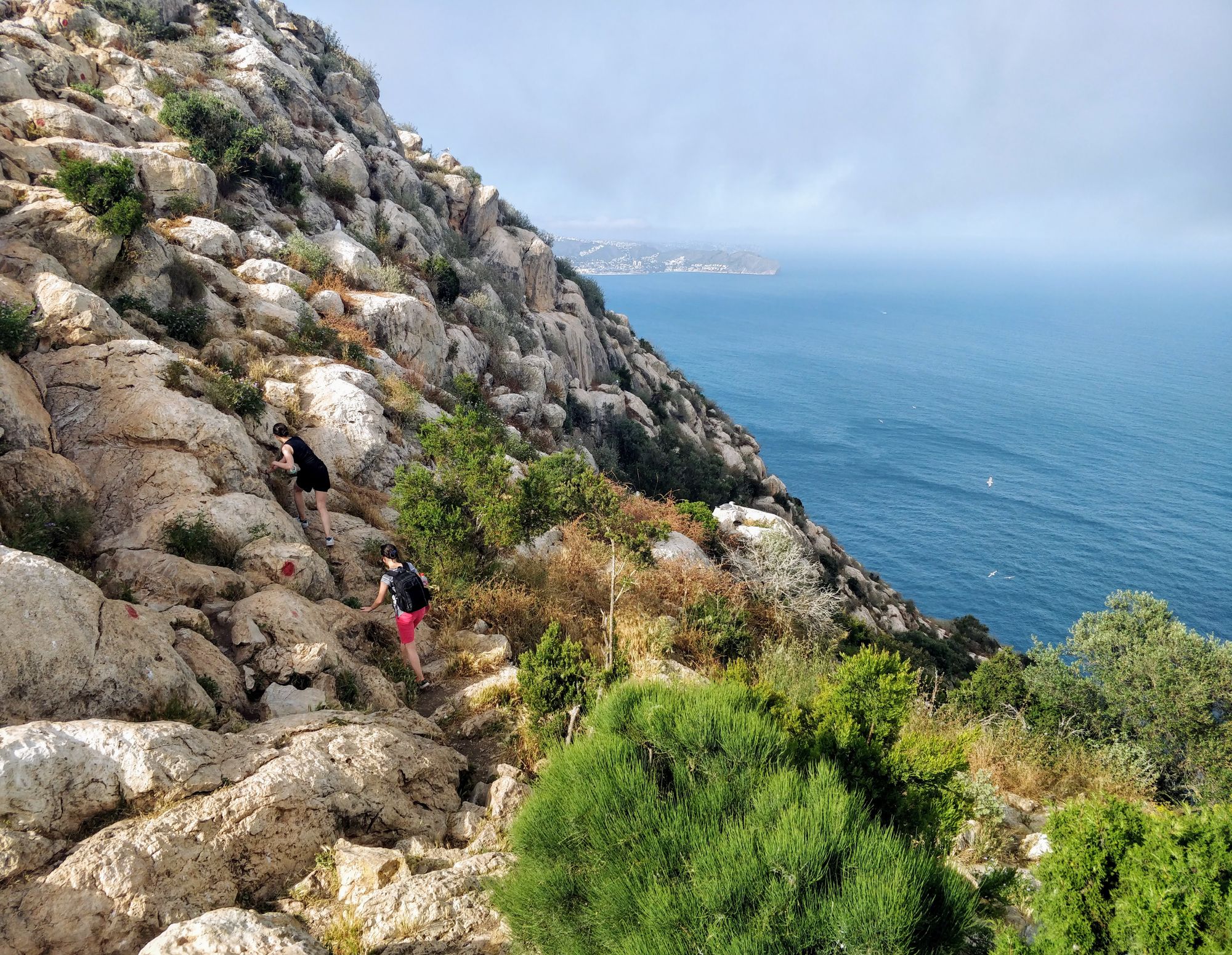
At the end of a steeper climb, we are greeted by a couple of seagulls, who welcome us, and convey to us the fact that in a short time, we will reach the top.
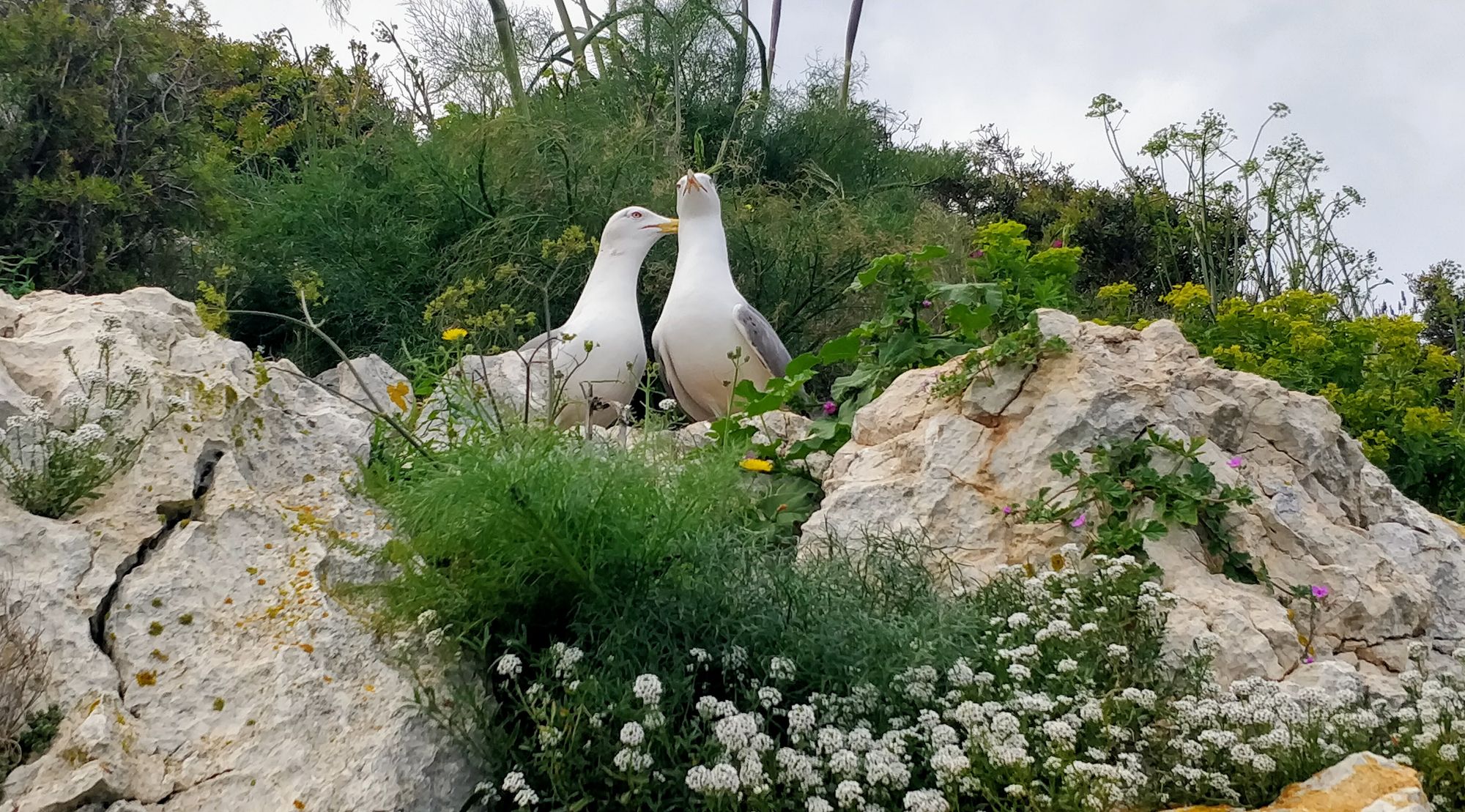
I understand that they are responsible for this part of the route, and they are supervising the area to make sure that no one gets injured on the rocks or gets lost on the way to the top.
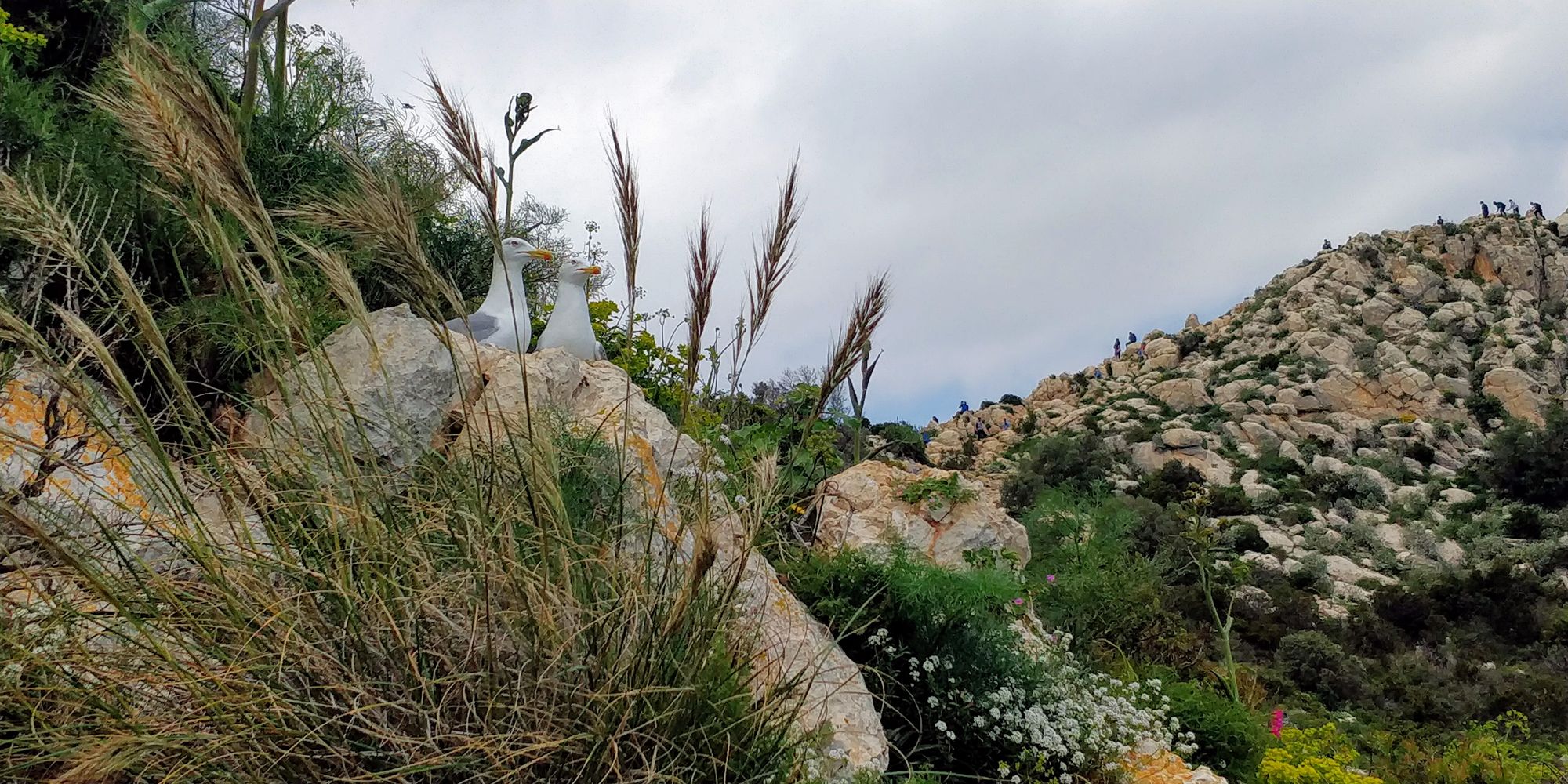
There is a big crowd at the top. This time not seagulls, but fellow hikers. We're sorry we made the mistake of coming here on the weekend. This is the third time we have realized that Spanish people really appreciate the beauty of their country, and enjoy nature every weekend. But that can also be a nuisance: congestion.
We find, however, a secluded place, from which we can freely admire everything. And we have a lot to admire.
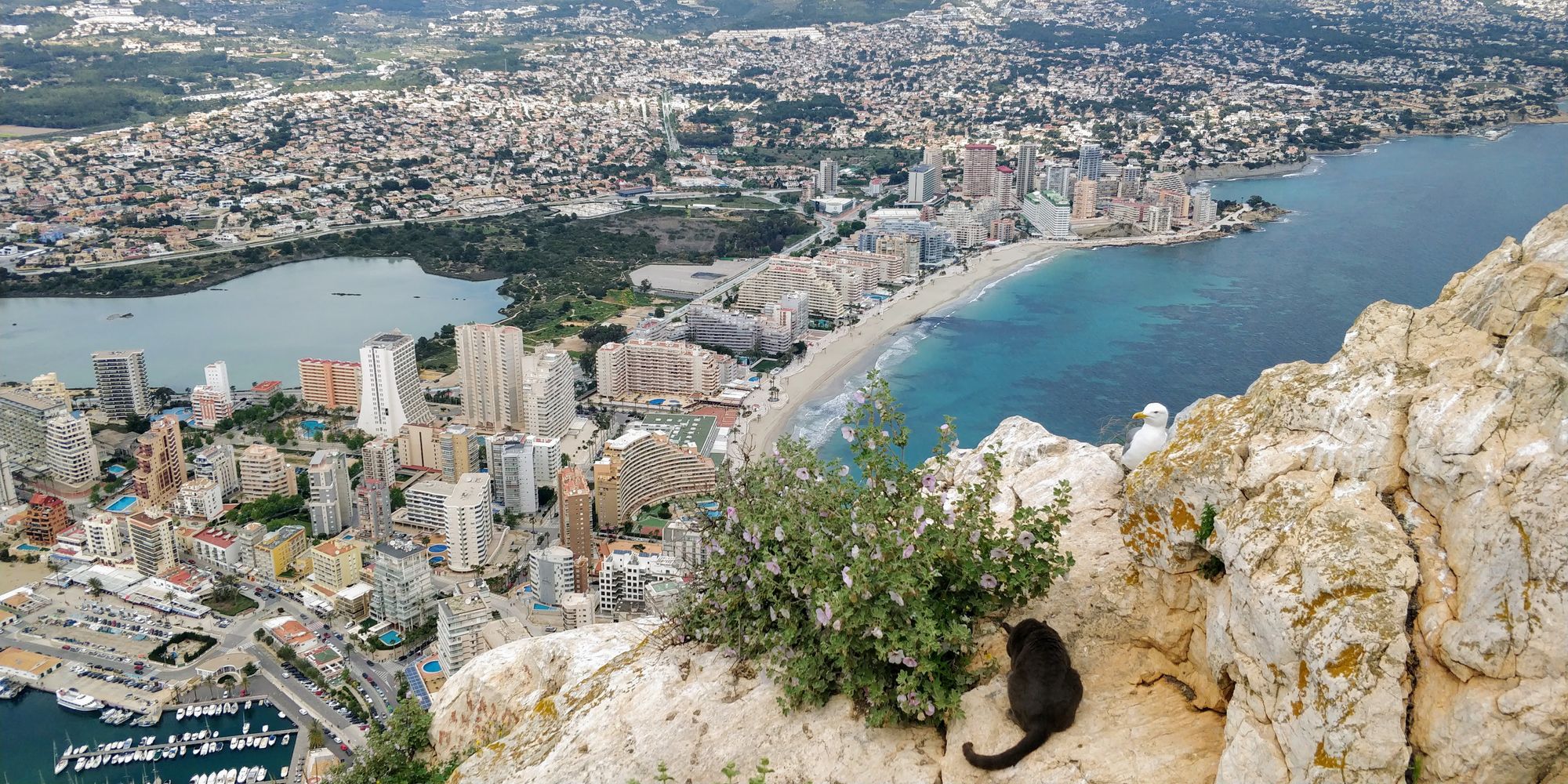
To the west, beyond the guarding seagull, we see the entire Mediterranean coast up to Sierra Gelada. If we had good visibility, we would see the beautiful city of Altea.
A little further inland, we can see the sharp cliffs of the Sierra de Bernia massif.
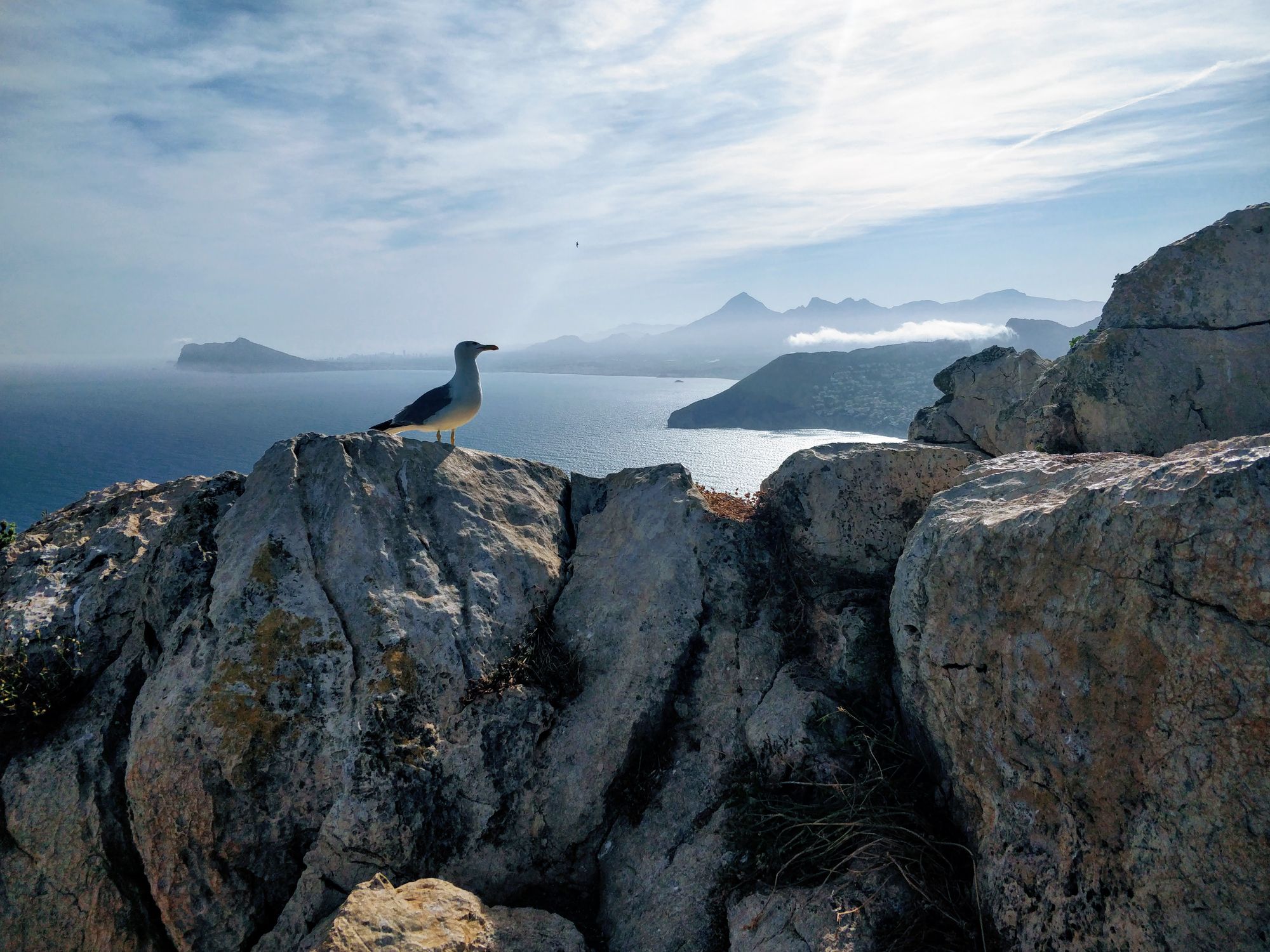
The seagulls are not always peaceful. This mother with little ones, responsible for the well-being of tourists and her chicks, uses threats and violence to bring Fineas back on track.
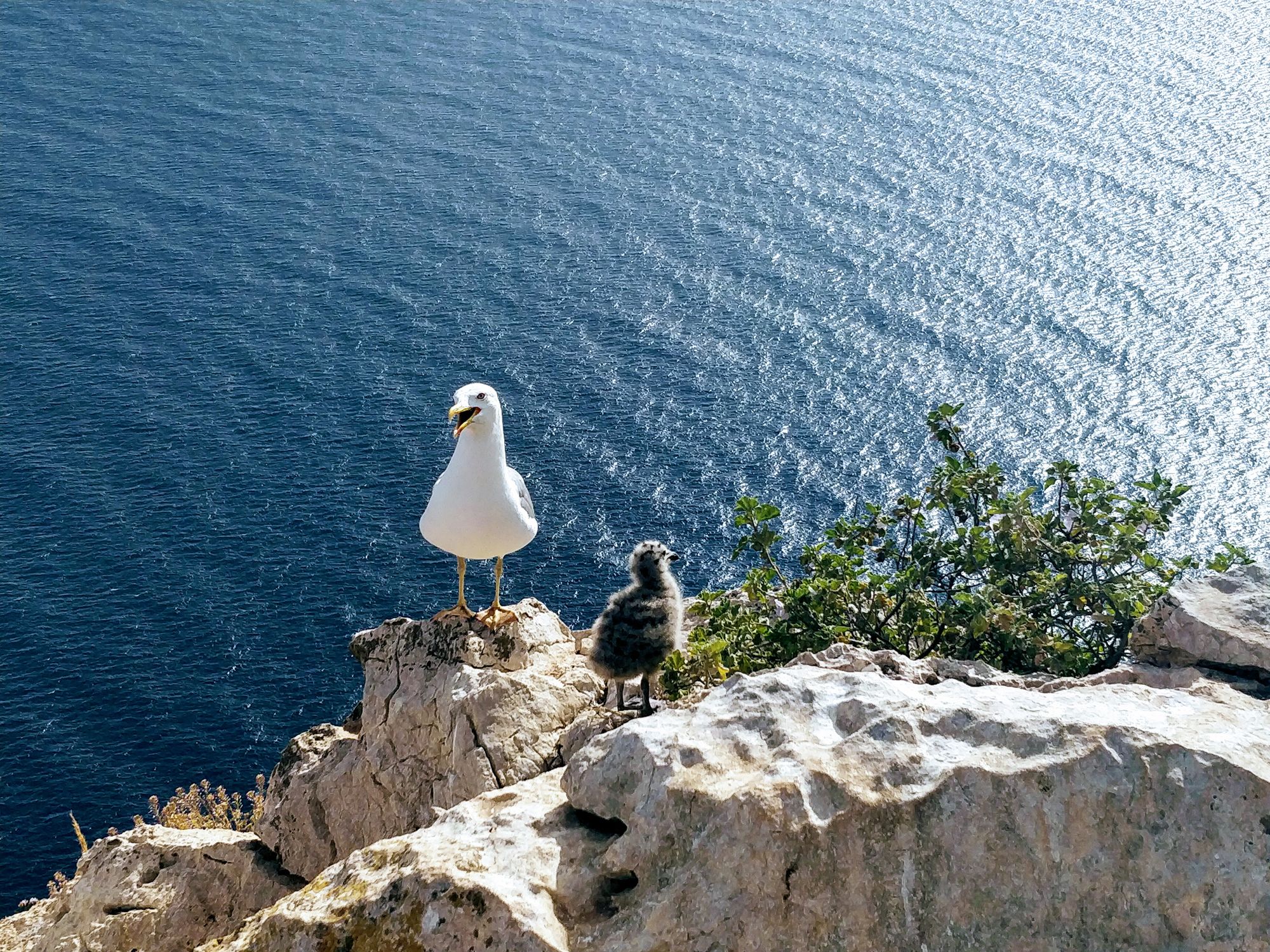
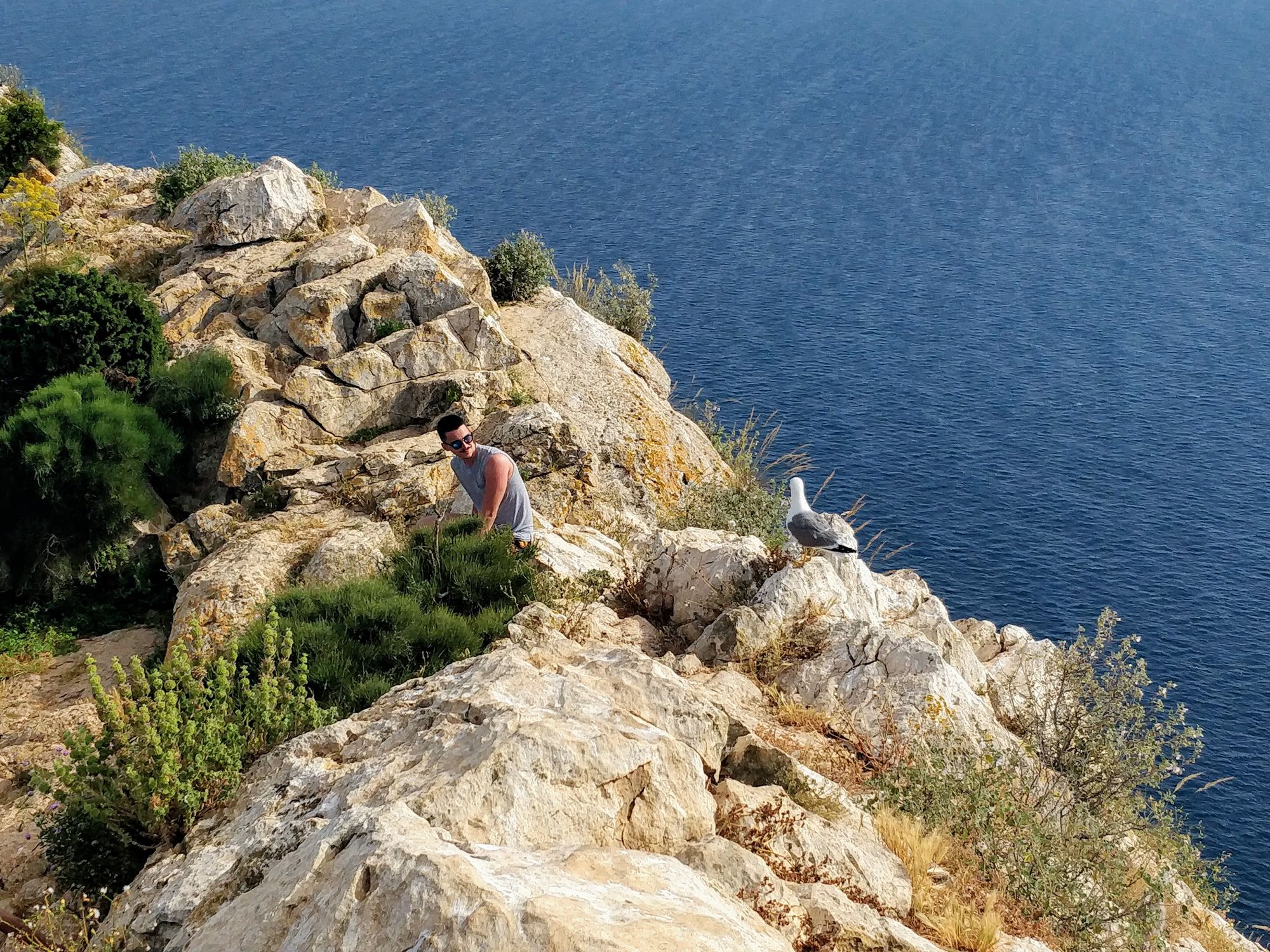
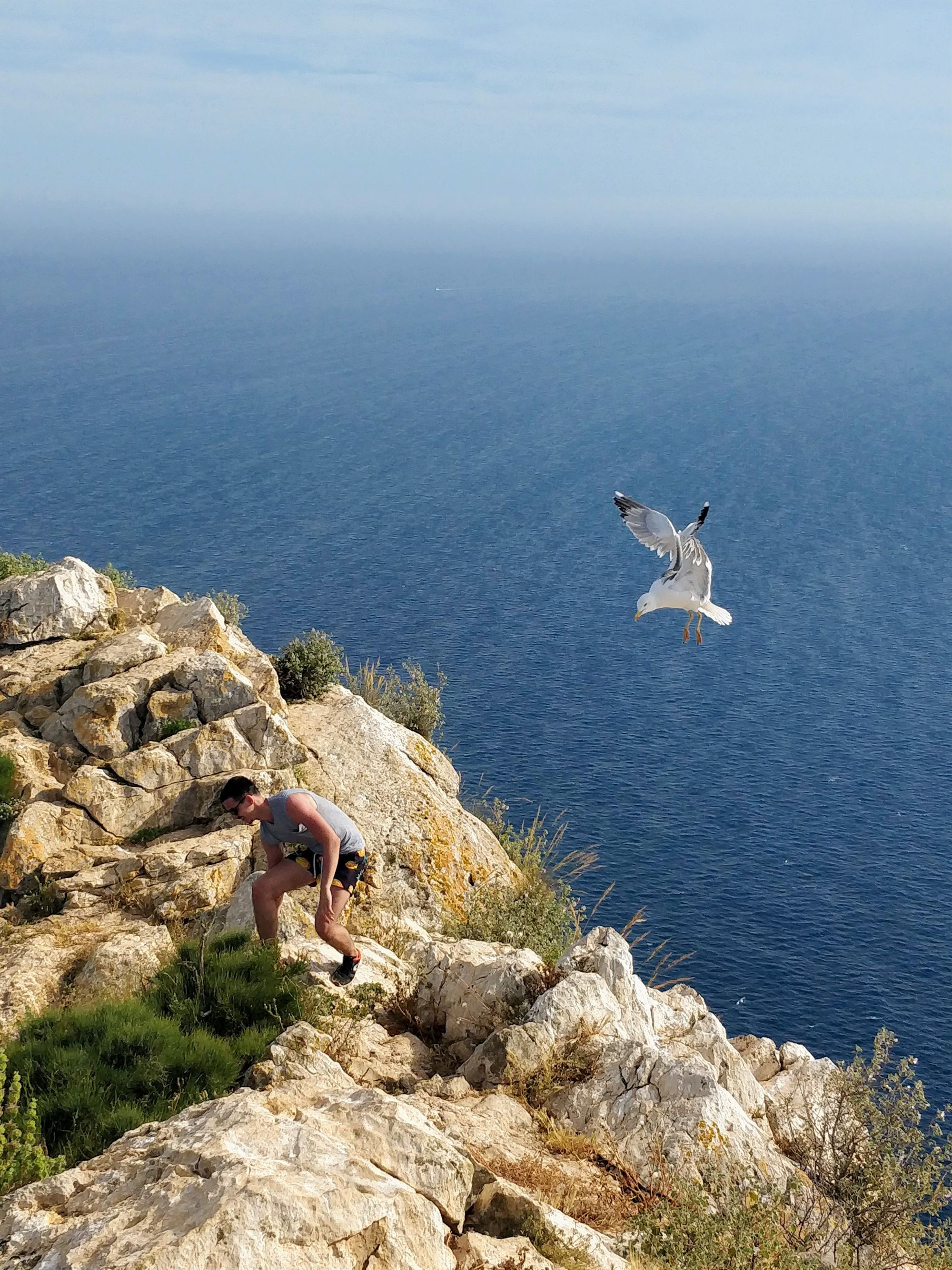
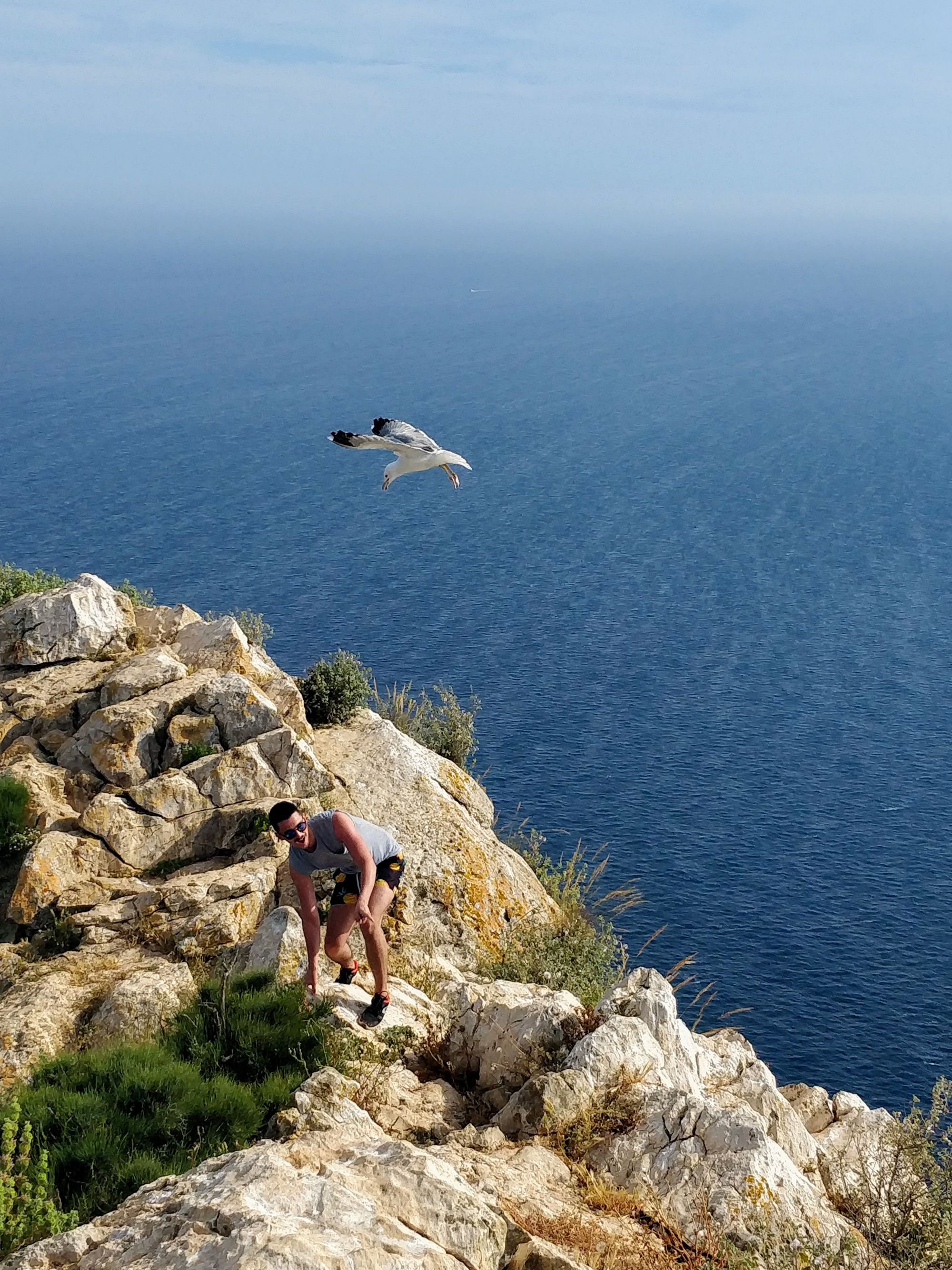
When we consider that we have admired enough, we carefully begin to descend.
From time to time, the seagulls do their duty conscientiously.
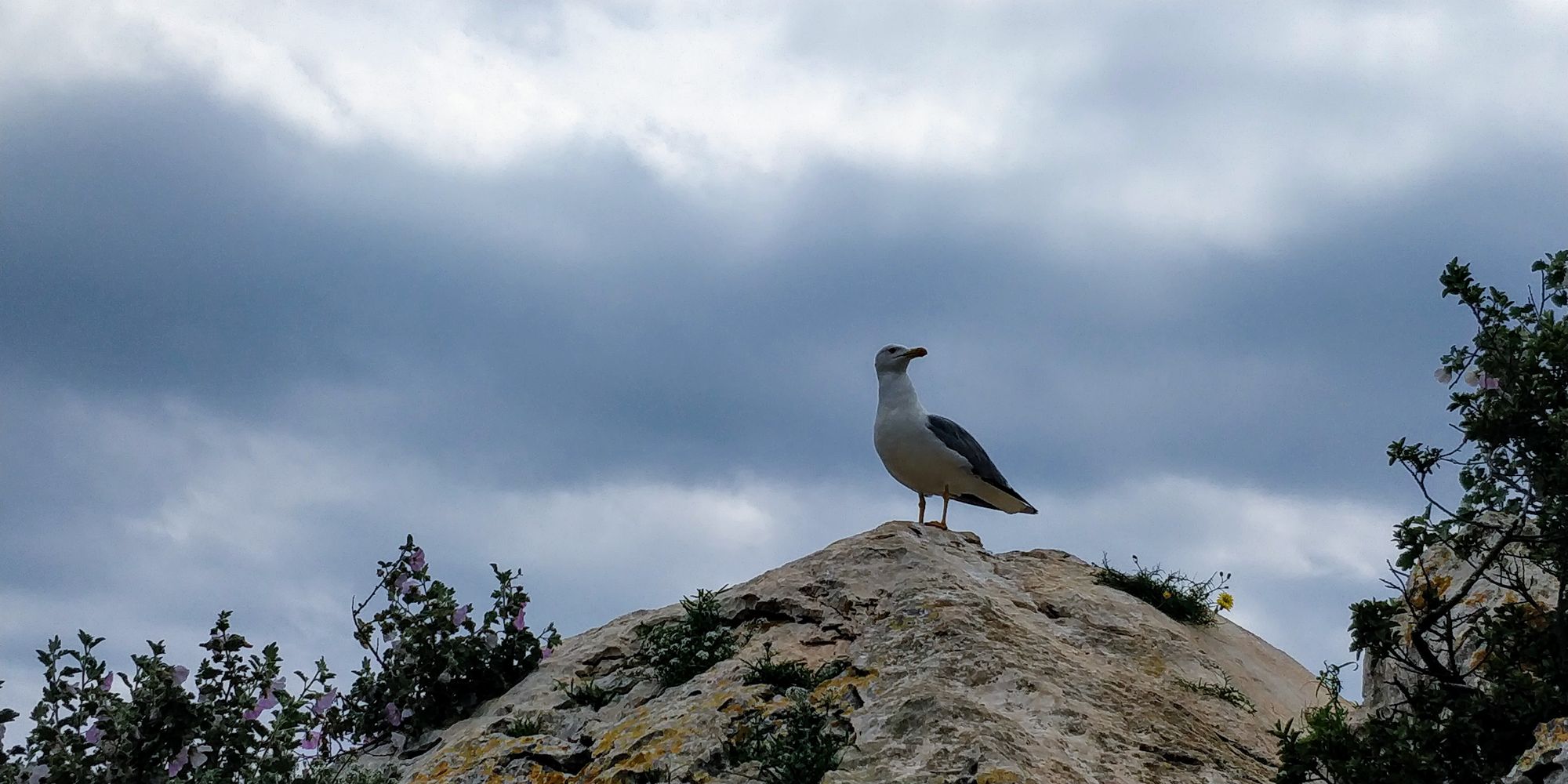
We catch some enjoying their meal, or having other activities.
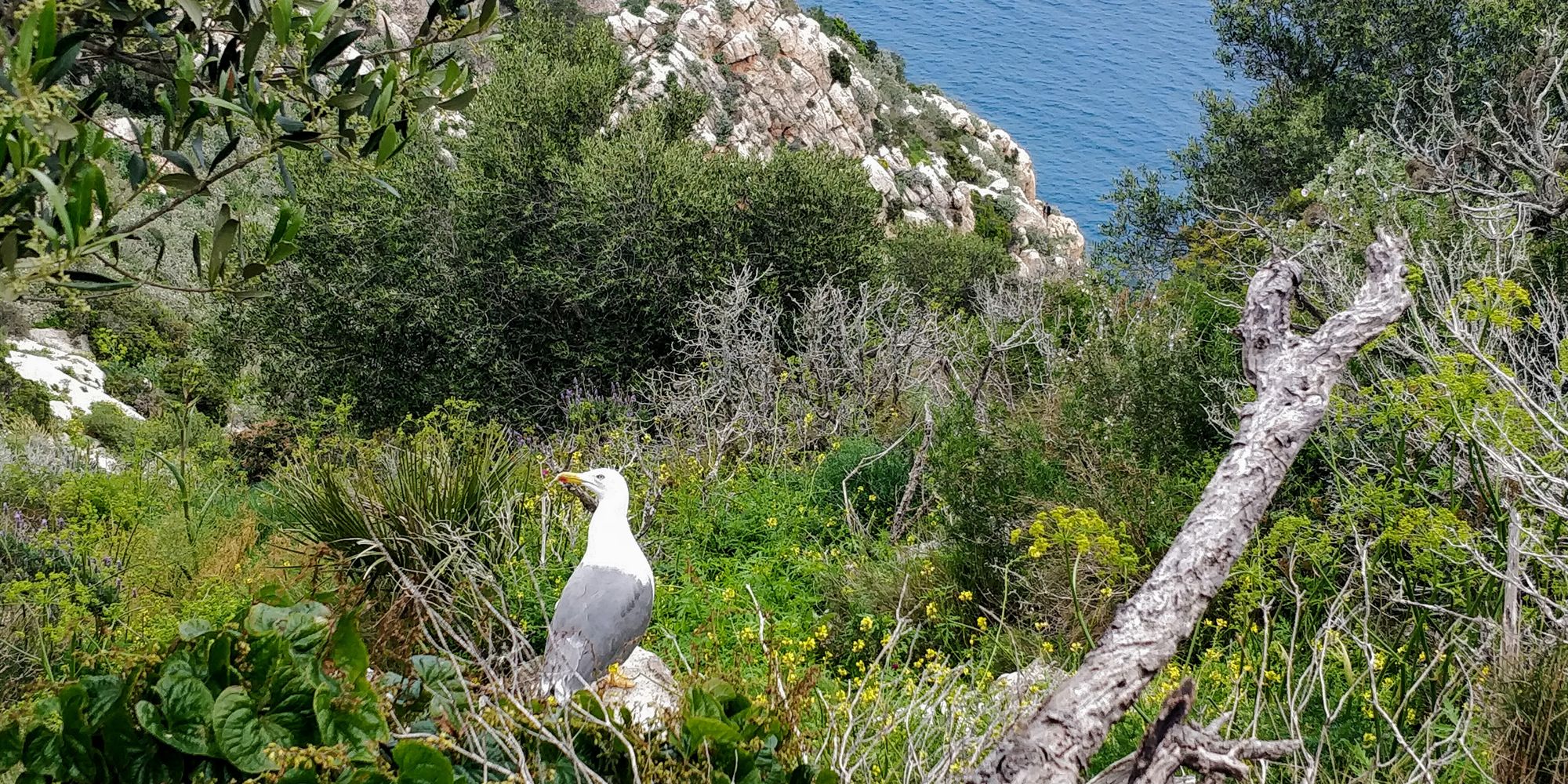
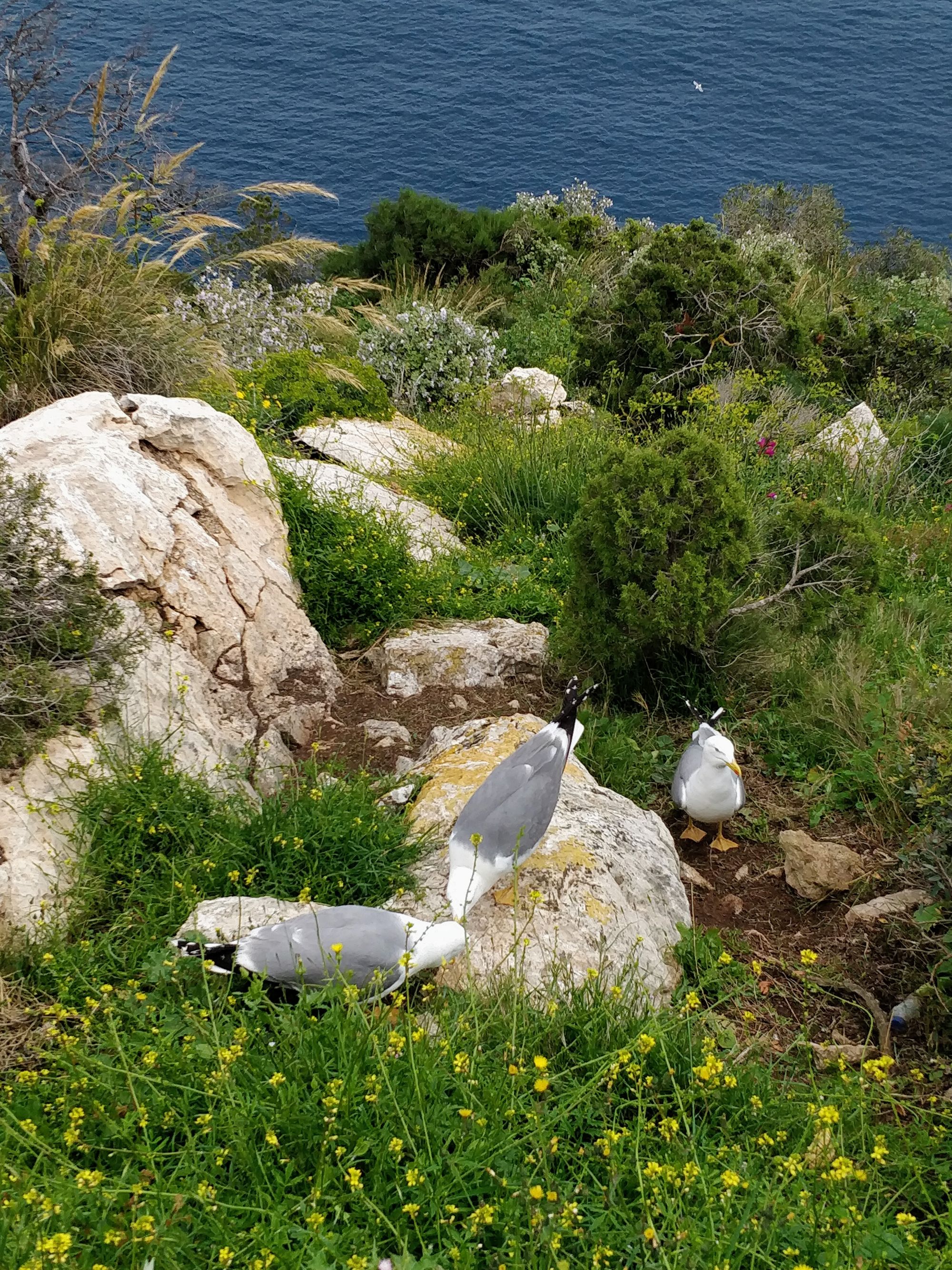
We continue to descend carefully through a fairytale landscape.
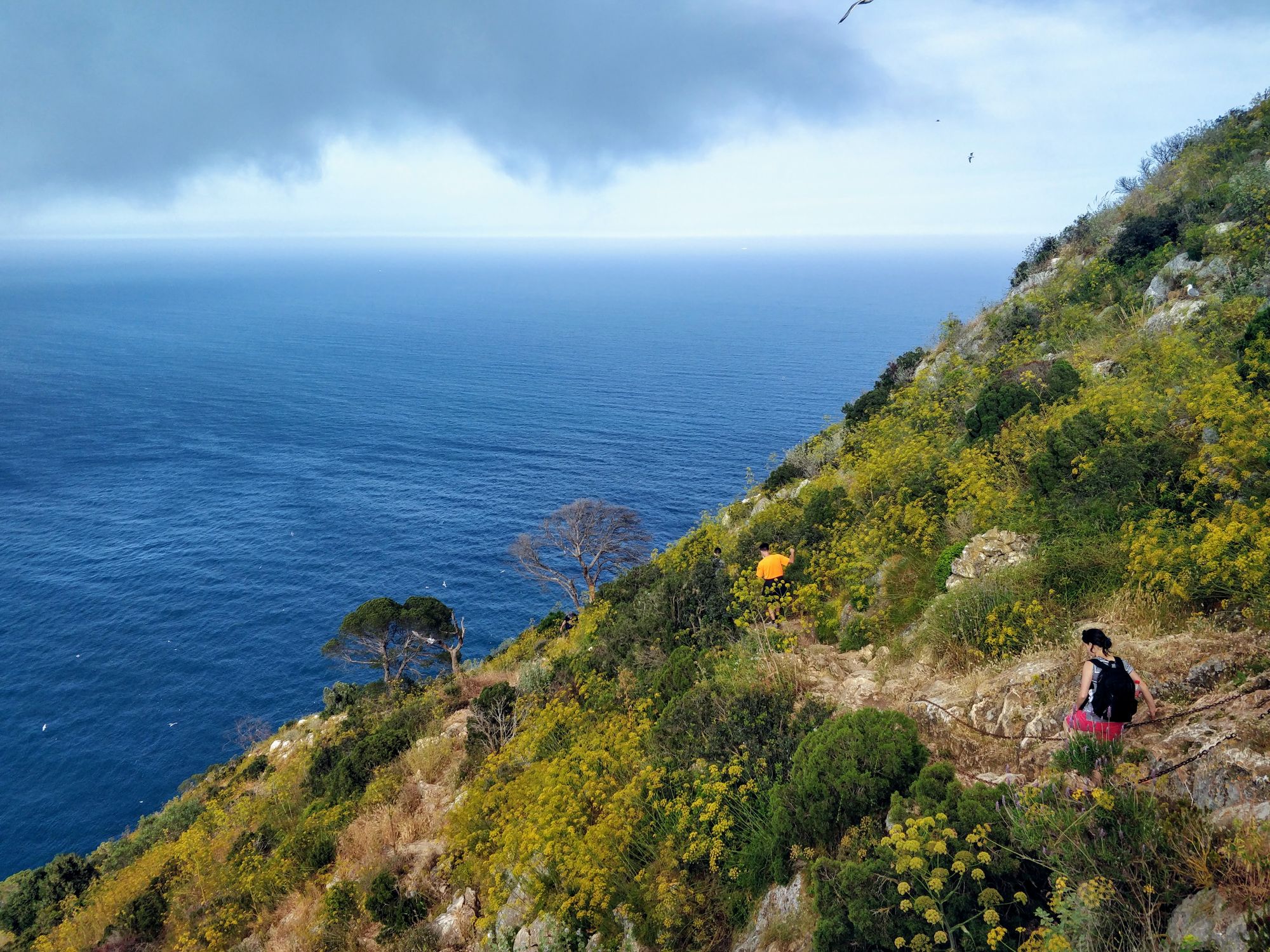
We are still above the seagulls, and the sea, the beach, the path from where we came from and the human settlements on the coast look very beautiful.
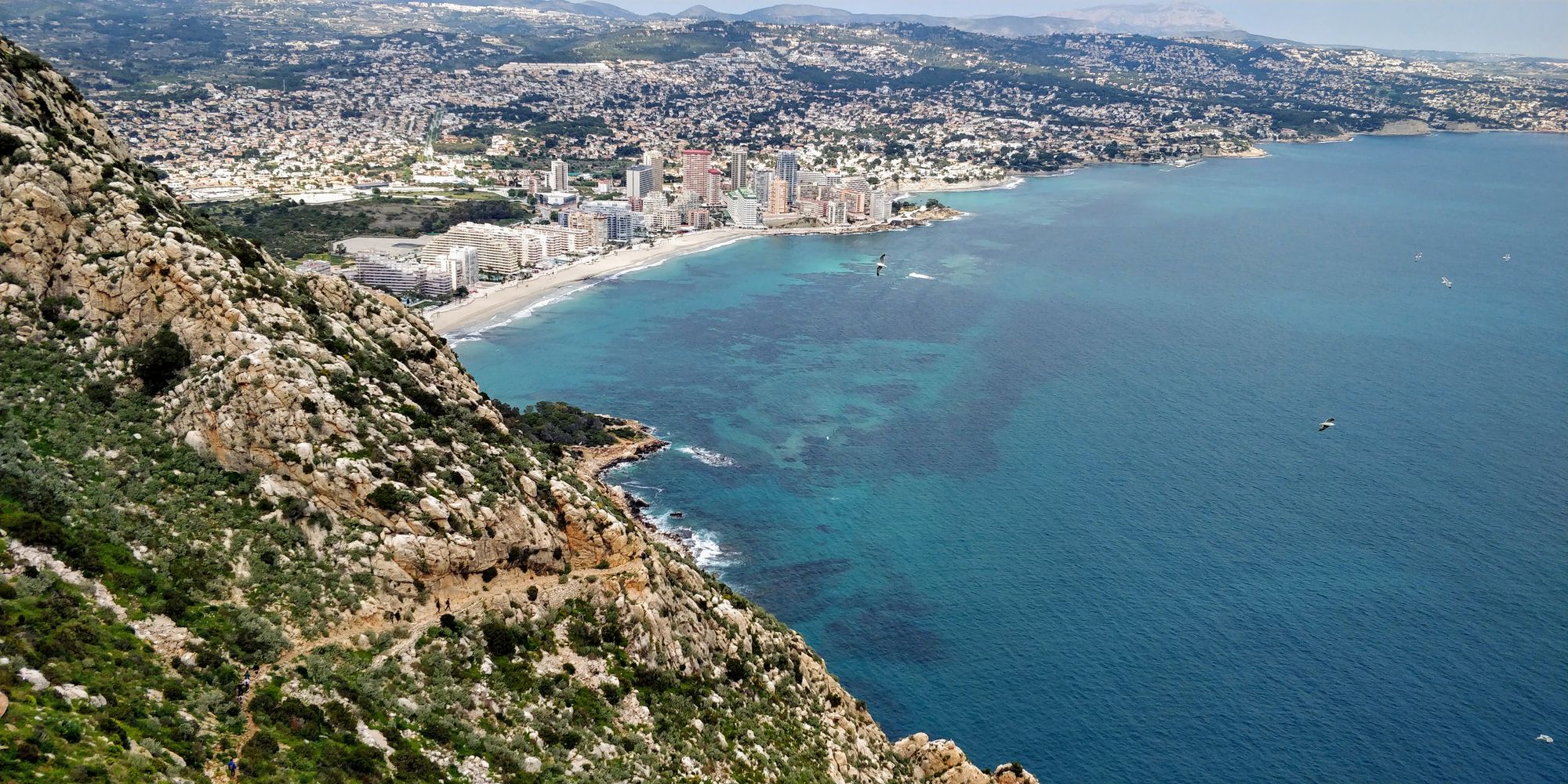
We realize that we have descended quite a bit, when most of the seagulls are above us and fly agitated, circling the rock.
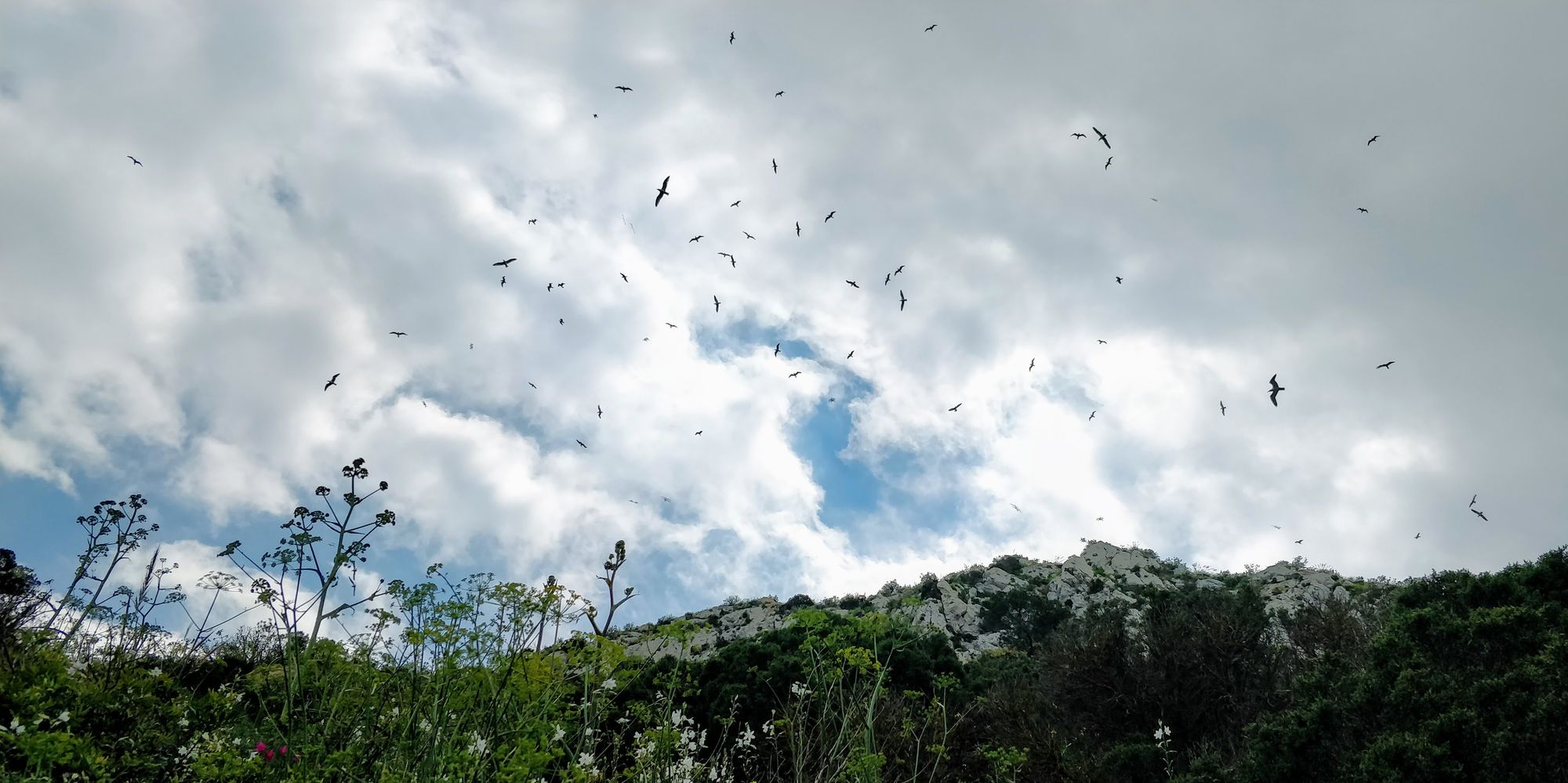
However, there is still a long way to go between us and the sea. And lots of shades of green and other colors.
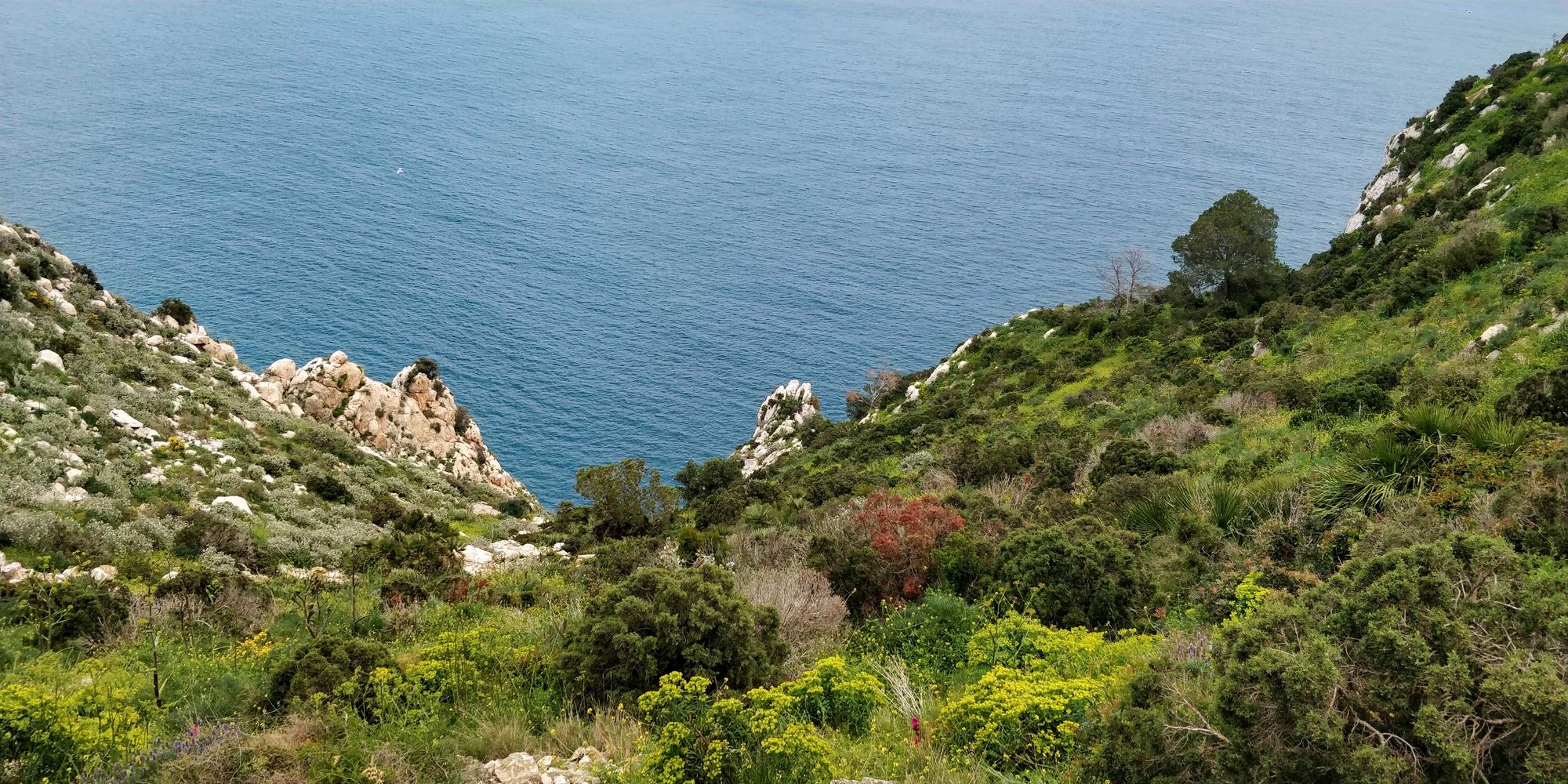
We reach the tunnel again. After passing through it and descending a little, we turn right on a path, to admire the sea once more, before finishing the route.

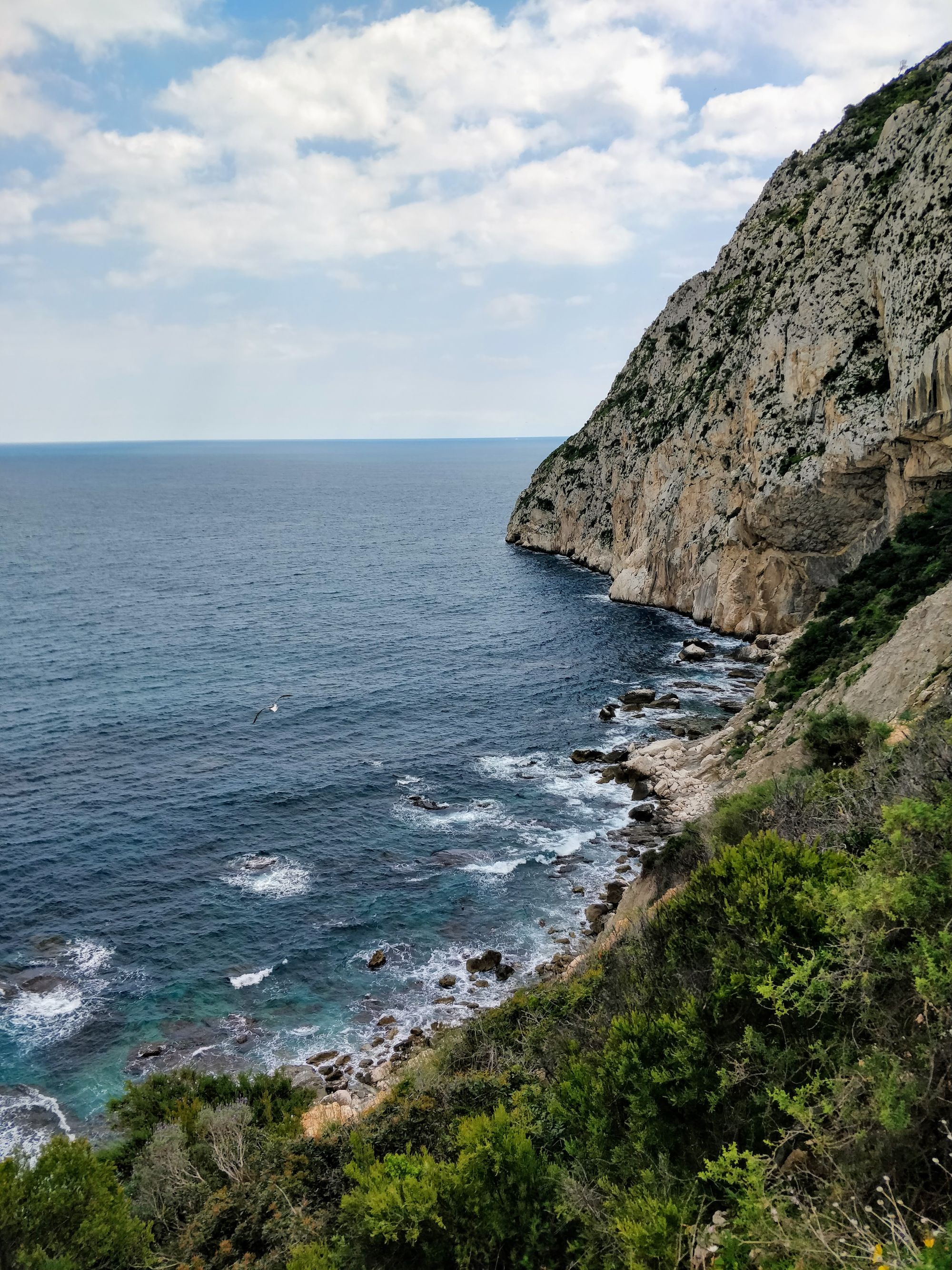
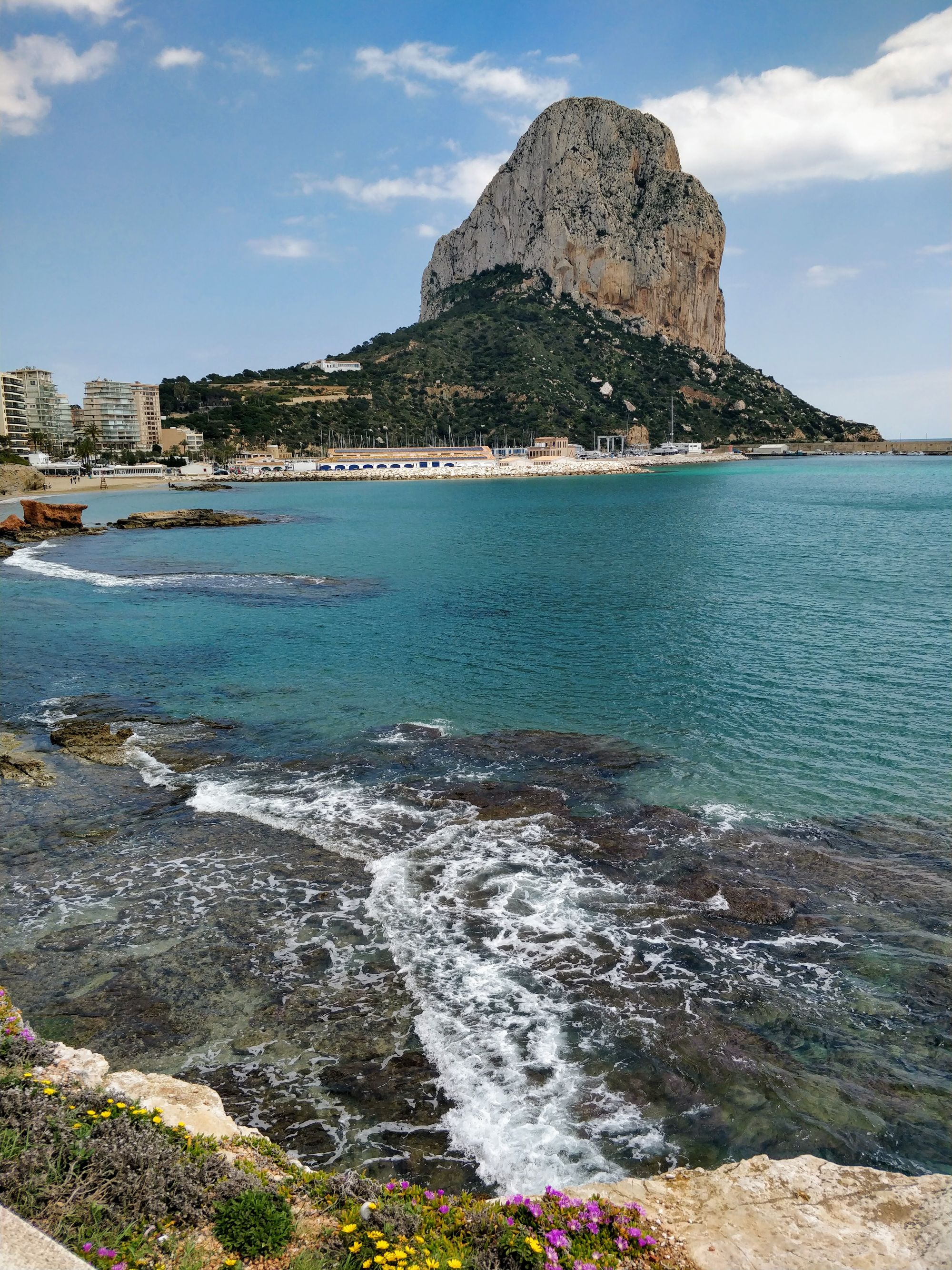
Reaching the base of the giant rock, we walk a little on the beach, so we can see from below the beautiful places we climbed today.
We return to the car after three hours of hiking and walking, and we leave happy and fulfilled, on our way.
Conclusions
The route to El Peñón de Ifach - the smallest natural park in Spain - is spectacular.
And it's not too long. We sat down to enjoy the views, but if you hurry, you'll be done in less than two hours.
It's a short and beautiful hike, well worth a visit.
Have you been to Peñón de Ifach? Or in other places in the Valencian Community? What else have you seen around here? What experiences have you had? What tasty food did you eat? What impressed you the most?
We want to go back someday and look for ideas.
We look forward to hearing from you on Facebook / Instagram / Twitter, in the comments section below, or in a private message.
Till’ next time!



